Literature: national idea, awards and donuts
Cinema: The Welder from Brest wins in Sheffield. The Death of Directors
Theatre: with Russia and “Victory”
Music: The return of major festivals and international success
Traditional culture: trends in Belarus and abroad
Art: Heads without Bodies and a Capitoline Wolf in a Wheelchair
Literature: national idea, awards and donuts
April, May, and June in global climate and politics were marked by an alternation of abnormal frosts and heat, which, moreover, were called by climatologists and political scientists not an anomaly, but a new normality. Let’s take a look at how this affected authors and their books. What signs of weather dependence and political interdependence appeared on the thin skin of the domestic literary process?
Trends within Belarus: the search for the national idea and censorship of scientific activity
One of the notable events within Belarus was another request for a national idea. Interestingly, only four months passed from the moment of the “inauguration” to this request. Let us remind you that after the election of Alaksandr Łukašenka to the post of President in 1994, power was consolidated for several years, and the request for a state ideology appeared only in the very early 2000s. This time, the national idea should not be just anything, but “capture the minds and hearts of the people”, as the presidential pool put it on June 12 through its leader.
Let’s try to guess what lies behind the voiced request, because one way or another, the production of content for state ideology has been handed down to loyal writers for the past twenty years.
First, oddly enough, this may mean the regime’s desire to return from a costly dictatorship to a completely budgetary autocracy. Whether this is feasible in practice and whether it is possible to turn a blind eye to the events of the last 5 years is another question; each and every one will answer it in their own way. Let us note the very fact that Belarusians will again be tried to be controlled not by force, but by rhetoric. And the rhetoricians of the government are tasked with choosing slogans that are attractive to the masses.
Secondly, it should be noted that the regime’s ideologists, consciously or not, when thinking about Belarusian, copy the work of not just opponents – inveterate enemies. The very concept of “National Idea” appeared in the title of a book by the political prisoner Pavał Sieviaryniec back in 2005. Today, the first association related with the term is a large-scale media project by Zmicier Łukašuk and his colleagues from Euroradio, which was embodied in three books with dozens of opinions from leaders and experts of Belarusian publicity.
How to understand this? I propose to understand it as follows: the content of the national idea itself is a secondary thing. The main thing is the monopoly on its formulation, which Łukašenka wants for himself.
I will support this thesis with a reference to propagandist Uładzimir Piarcoŭ, who, speaking on June 28 at the congress of the “Belaya Rus” party, divided all actors who claim to formulate the national idea into “good” and “bad” ones:
“In Belarus, pseudo-patriotic cells aimed at destructive activities and funded from outside have begun to form on patriotic themes. We cannot allow them to develop”.
It is difficult to guess who the mainstream propagandist means by “pseudo-patriots”. It would seem that the fight against unreliable elements, effectively implemented until 2020, is being waged today with even greater efficiency. Therefore, it seems that the probability of finding new conspiracy theories and various “national democratic” elements in the ranks of cultural figures has not disappeared, but has only increased. The only thing that can stop the flywheel of repressions for now is the association with the shooting of the creative and scientific elite on Dziady in 1937, which such a turn of events will invariably cause.
Continuing the conversation about the Belarusian national idea, I would like to mention another bright event of the season – a lecture by Timothy Snyder at the Institute of Humanities in Vienna on June 27. It should be considered a balanced, qualified and extremely influential look at the past and future of our country from a world-famous researcher of Central Europe. Snyder in many ways overturns the stereotypes about our land that exist today among Western humanists. He presents Belarus not as a remote, provincial corner of Europe – but as its ancient political and economic centre, a hub for communication between the North and the South, the West and the East. On the way from the Varangians to the Greeks, says Snyder, the Varangians and the Greeks enriched themselves not only materially, but also spiritually. Compare that with Valancin Akudovič’s thesis: so to say, Belarus is absolute zero, but zero is the beginning of coordinates.
In short, Timothy Snyder did not say anything in Vienna that Ihar Marzaluk did not say before him in Mahilioŭ. Who, according to rumors, undertook a lot of lobbying actions for the arrest in late March – early April of pro-Russian activists Volha Bondarava and Siarhiej Łaškoŭ. That is, those that are trying to influence Belarusians, denying the identity and uniqueness of our history in the past, and do not see the future of Belarus without the Russian-imperial paradigm.
The difference between the narratives of Snyder and Marzaluk is in the target audience. While in the first case it is educated Americans and Western Europeans, in the second it is Belarusian officials and security forces. Which is equally important.
We could have ended the topic of the national idea if the updates had not appeared just now, as these lines are being written. On July 2, on the occasion of Independence Day, A. Łukašenka made the following statement:
“We admire the spiritual strength and courage of our compatriots, who were able to preserve their language, culture and faith throughout the centuries of total Polonization. In the very heart of the people, who defended the right to be called Belarusians, a national idea matured – the idea of a free people. The idea of a legitimate aspiration to be the master of their historical land”.
To summarize, to be a Belarusian, according to Łukašenka, is to “be the master of your own land”. Perfect. And if you add “…and Russification” to the long quote after “Polonization”, you can even agree with every word.
The author of these lines spent the whole of June trying to formulate a national idea from the point of view of state propagandists, taking into account all the ideological trends of the five-year plan. Based on the model of “Liberty, Equality, Fraternity” and “Bread! Salt! Land! Freedom!” [“Хлеба! Солі! Зямлі! Волі!”] he came up with something like “Purity. Peace. Independence” (in order of priority). In his opinion, such a slogan is unifying, since the three listed values are shared by the majority of Belarusian citizens: both inside the country and in exile / emigration / relocation.
But what they brainstormed in the “pool of the first” as a result is even cooler. First of all, because it is finally a really carefully formulated and well-thought-out thesis, and not the vague slogan of the early 2000s “For a strong and prosperous Belarus” (at that time, it was clearly opposed to Kupała’s exclamation “Long live Belarus!” and losing a lot to it). It is quite innovative to surprise both the dozens of thousands who went to protest, and hundreds of thousands who did not go. It is enough “for life”. And it is quite Soviet in rhetoric (cf.: “From Moscow to the very outskirts, from the southern mountains to the northern seas, man walks as the master of his vast Motherland…”). And it is quite offensive to those who left, who, according to the authorities, have lost the chance to be the masters of their historical land.
We should also emphasize the sharp turn to antiquity in the rhetoric of the graduate of the Mahilioŭ history faculty. In recent speeches (for example, at Kupalle in Alieksandryja), the “thousand-year history of the Slavs” is mentioned. This contradicts the rhetoric of recent decades, when Belarusian statehood began with the victory over Nazism in 1945, which was invariably noticed and criticized by political scientists… There is a strong suspicion that the creative minds of the authorities also listened to Timothy Snyder.
To other signals from within Belarus. Manifestations of censorship have begun to affect the content of literary works published in the country. There is an oral, but rather decisive ban on quoting “those who left”. The ban applies to both researchers and authors of works. This means that the study of contemporary literature in Belarus has simply stopped. In addition, the taboo on mentioning in a good or neutral way members of the independent Writers’ Union, which was abolished by the authorities in 2021, continues to operate. However, that taboo has a chance to dissolve like an effervescent vitamin in water: presence in the Motherland will become a sufficient criterion for a writer’s loyalty. The question is how writers will take advantage of this. Today, there is no sign of young people being recruited into the official Čarhiniec-Karlukievič Union. Increasing membership was necessary before, while the “right” and “wrong” were not separated by physical state borders.
This order of things has an interesting effect on the literary one. The excellent channel about Belarusian science De Facto drew attention to the article by Mikoła Mikulič in “NASB News” [“Весці НАН”]. It is about the rediscovery of the names of Western Belarusian writers of the interwar period: Pietruś Hranit, Kastuś Rahojša, Hanna Novik, Juljan Sierhijevič, Piatro Sakoł and Anatol Biarozka. Repressed in Poland, they have remained unknown to the general reader in Belarus until now.
It is noteworthy that Mikoła Mikulič is that editor from the NASB [National Academy of Sciences of Belarus] who collected poems for an anthology of modern poetry in 2020. The anthology has not been published to date.
Official sources allow us to conclude that the symbolic purges of at least deceased writers have been suspended. It is difficult not to associate this with the pacification of Volha Bondarava, the main hater of the Belarusian national canon. On June 24, a conference dedicated to the 125th anniversary of Kuźma Čorny was held with great fanfare at the National Academy of Sciences of the Republic of Belarus. And Vasil Bykaŭ’s house in Byčki was taken under state protection in June (as a belated gesture to the 100th anniversary of the classic).
Thus, it is worth diagnosing the large gaps in the description of the modern literary process by state researchers, caused by censorship. What has already been written may be hushed up and omitted. And this is a challenge for the Congress of Belarusian Researchers, which will be held in September in Berlin.
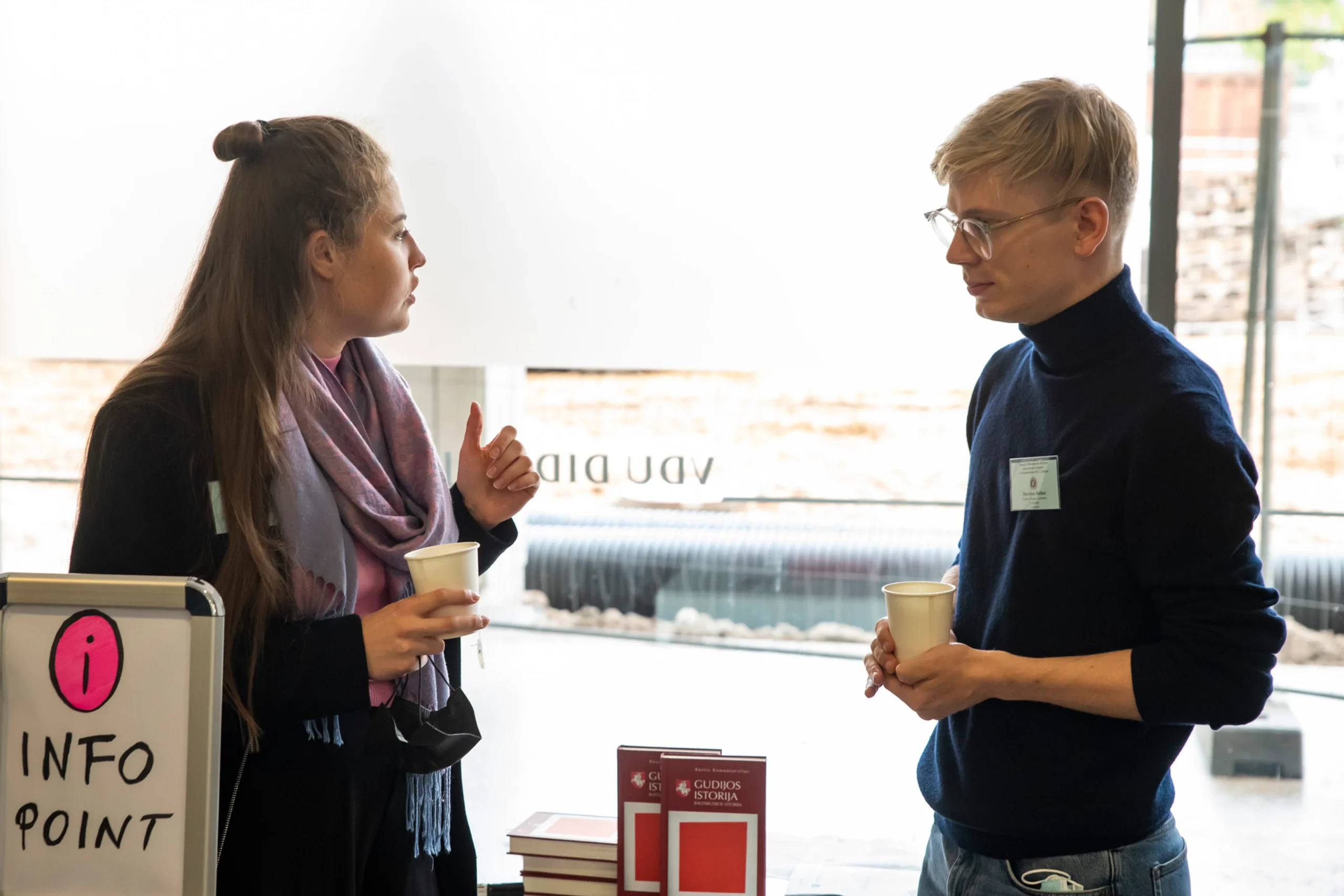
Trends from outside Belarus: working through the traumas of 2020 and the “downshifting” of writers
First of all, the author of the review continues to insist on the indivisibility of a healthy literary process inside and outside Belarus. There are no signs of a division similar to the confrontation between “good Russians” and “Zetniks-Vatniks”, which can be observed among Russian writers. I would like to share a joke overheard at a party in one of the literary museums: “It is enough just to be published in “Połymia” or “Maładość” – and you become a leper. You are no longer in the ranks of normal writers. We are marginalized”.
Such is the worldview of some (most?) creators involved in the state press. Bans on everything and everyone have led to the fact that what is permitted has become a minority. And any minority leads to marginalization. Access to state resources did not previously mean that authors became part of the nation’s elite, but now the situation has even worsened. However, a good balance of “price-quality” (in the sense of talent-permissibility) is demonstrated by Navum Halpiarovič’s author’s TV project “Interlocutors” [“Суразмоўцы”] on the Belarus 3 channel.
Besides, nothing prevents Adam Hłobus from being published in “Połymia” and “Maładość” and being proud of it. Therefore, one must think that the matter is still in the texts.
To the texts. I suggest you refer to the full lists of the three awards to stay up to date with trends in poetry, journalism, and historiography. The awards of Natalla Arsieńnieva (poetry), Aleś Adamovič (journalism), and Francišak Bahuševič (cultural and historical) started their seasons in the spring.
The poet laureate became known on May 24: it was Siarhiej Pryłucki with the book “Nothing Not Fearful” [“Нічога нястрашнага”] – letters to his son from occupied Buča (hochroth minsk).
Of the 15 positions on the full list, 10 books of poetry were included in the long list: this speaks of a high overall level. This is not surprising, since we have only two poetic debuts, the remaining authors – (of those who appear anonymously) – are recognized and well-known. Of the 15 books, a third are probably authors who remain in Belarus (although some of them have published collections in foreign publishing houses). The short list, in addition to Pryłucki’s book, includes the libretto of the opera “King Stakh’s Wild Hunt” by Andrej Chadanovič (Gutenberg Publisher) and a collection of poems by a poet whose participation is “encrypted” (that is, the name and title of the book are replaced by “one-time” cryptonyms).
Without questioning the jury’s choice, I would like to note that Pryłucki appeared in the award process with two books. The collection “Hybroids” [“Гіброіды”] – postmodern ballads (“Mianie niama” publishing house) – lost to a book by the same poet, the opposite in pathos and method. Pryłucki, who recently joined the Ukrainian army, turned out to be an ideal symbolic figure.
The traditional awards of the Belarusian PEN – Adamovič’s and Bahuševič’s – have expanded the genre range of nominations. The attention of the members of the organization, who have the right to propose candidates, was drawn to books in Russian, Belarusian and the Polesian language, podcasts, virtual exhibitions and media projects. The author of the review discovered several notable projects due to their visibility in the context of the awards. And finally, thanks to improved communication on the PEN site, he understood how to distinguish between two similar awards. The Adamovič Award is for the best journalistic works about the present. The Bahuševič Award is the same, but about the past.
Literary awards and recent digests have brought to light quite a few interesting Belarusian books in various genre conventions. I will mention those high-profile novelties that, in my opinion, continue the paradigm set by the novel “What Are You Going For, Wolf” [“Па што ідзеш, воўча”] by Jeva Viežnaviec. This is “Blood Circulation” [“Кровазварот”] by Julija Cimafiejeva (“Andrei Yanushkevich Publishing”) – combing the wounds of family memory to understand one’s Europeanness. This is “Elephant” by Saša Filipienka (Gutenberg Publisher / “Vremya”) – written in Russian, but published first in an authorized translation into Belarusian, as a gesture of belonging to the national literary process. The book is announced as “the first Belarusian novel about the Russian-Ukrainian war”. This is, finally, Andrej Horvat’s “Home” [“Дом”], where the author, traditionally for himself, combined his own experience of restoring cultural heritage and forced emigration with a documentary text, archival research about a namesake – the owner of a palace in Naroŭlia, in a syncretic, poignant story.
These examples – along with Taćciana Zamiroŭskaja’s émigré diary “Evridika, check, did you turn off the gas” [“Эвридика, проверь, выключила ли ты газ”] (“Mianie niama” publishing house), nominated for the Adamovič Award, or the teenage story “Sonya, stop!” by Saša Huk (Gutenberg Publisher) and Klok Štučny’s detective story “Murder on Makajonka Street” (included in the list of extremist materials in the Republic of Belarus in May) – merge into a new phenomenon of Belarusian literature of trauma. Emigration, political prisoners, a war that is ignored like an elephant, a difficult family history – all this best presents the current worldview of Belarusians – despite the diversity of genres and creative methods.
Another distinctive trend of the season is international projects in Belarusian as a manifestation of neighbourly solidarity. The novel “Whisperers” [“Шаптухі”] by the Slovak author Elena Sabukhova (“Technology”) is dedicated to the customs of the Belarusian-Polish borderland; Yiddish Veršes (Centre for Belarusian-Jewish Cultural Heritage) – songs based on poems by Belarusian poets in Yiddish; “Stories about the Brave Knight Thanksalot and the Dragon Mr. Kindly” by Gintaras Grajauskas, translated by Sabina Bryło (“Surma”), as a partnership project of the Lithuanian Writers’ Union and the International Union of Belarusian Writers. In the spring, the “Pflaumbaum” publishing house released at least two books that are important for Belarusians: the almost 1,000-page novel “The Books of Jacob” by the Nobel laureate Olga Tokarczuk, which offers a different view of the history of the Polish-Lithuanian Commonwealth than the official Polish one, and “Burning Lights” [“Запаленыя свечкі”] by Bella Chagall: memories of the life and holidays of Viciebsk Jews, highlighting the Jewish tradition of Belarus.
In the spring, two authorial media projects of writers were launched on the Internet at once. On bellit.info – a podcast by Siarhiej Dubaviec, “Literary Notes” [“Літаратурныя зацемкі”], where he talks about outstanding books in Belarusian or about Belarus (for example, reasoning why the latest Russian-language novel by Pavieł Ancipaŭ is Belarusian literature). On reform.news – an analytical series “Glyukonate of the Nation” by Maksim Žbankoŭ. In both cases, veterans of the Belarusian cultural space can expect proven content in a familiar style. The flagships of the Belarusian intellectual fleet have finally found their home ports. And if Dubaviec is a look at the current literary process through the prism of Belarusianness, then Maksim Žbankoŭ is Maksim Žbankoŭ. It doesn’t matter what he writes about the results of the post-revolutionary five years. After all, what can you write here? What matters is how he does it. The phrases taken out of context need to be on designer T-shirts: “Babkoŭ is beautiful, but he’s on a cloud”; “The country was rolled into concrete like an unfortunate mafioso”; “Thoughts fly into space, they have nowhere to take hold”. In a word, enjoy.
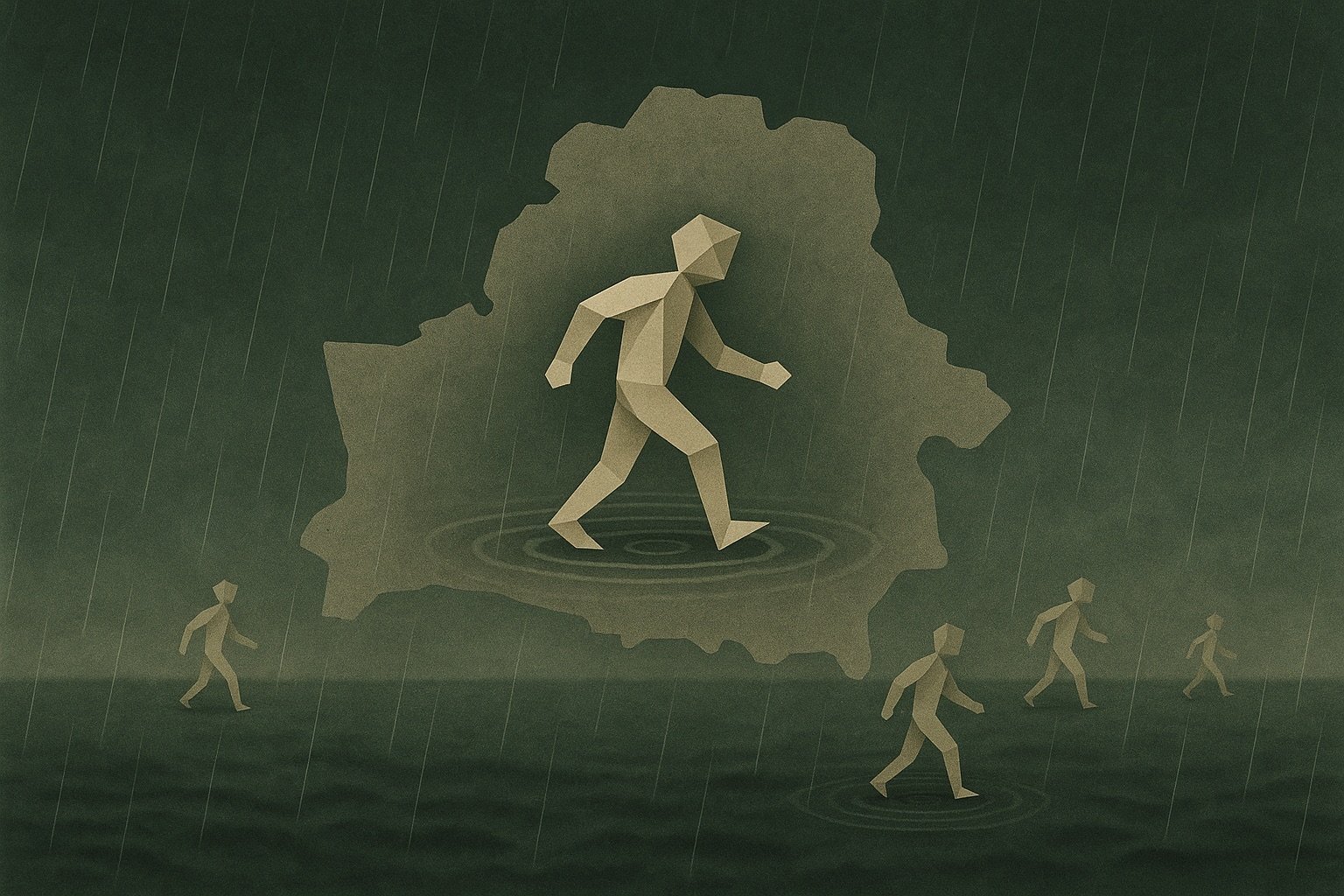
Finally, a bit of secular news. But strictly to the point. Poetess Nasta Kudasava announced her new profession. She sells donuts on the beach in Gdynia. The devaluation of Belarusian humanitarians in emigration is a trend that is growing in 2025. Many are taking on “unprestigious” work. But only writers are not shy about advertising it. Here we can mention previous examples – the work of Sviatłana Kurs (Jeva Viežnaviec) as a social worker in Warsaw during the Covid epidemic, which she poignantly wrote about in her blog. And Alhierd Bacharevič’s unsuccessful attempt to get a job as a salesman at the “Belsayuzdruk” kiosk during his Minsk period of work. Then the writer was refused, because he is… a man. And, of course, the latest book by Siarhiej Kalenda “He cuts hair and writes” [“Стрыжэ і піша”] (Gutenberg Publisher).
I would like to express my hope that coffee, donuts, manicures, massages, or whatever else creative Belarusians know how to do is just another experience for poetic comprehension of the world. And a search for strength to overcome the Belarusian trauma-centricity that still dominates the domestic literary process.
Cinema: The Welder from Brest wins in Sheffield. The Death of Directors
Like the entire Belarusian society, the national cinema is suspended in a state of uncertainty. The most active and promising authors are in emigration, the state film studio is trying to demonstrate activity, but is at a standstill, a generation of new filmmakers is gradually emerging within the country, and the film club movement is becoming more active.
April
The XI Nefiltravanae Kino Festival [Unfiltered Cinema] was held from April 23 to May 4 at four European locations in Vilnius, Warsaw, Helsinki and Hamburg. After forced emigration from Belarus, the festival organizers found themselves in different countries. In total, about fifty films were shown in ten programmes, including eight in Belarusian. As in previous editions, the programmes of “Unfiltered Cinema” consisted of fiction, documentary, and animated films with an experimental bias and a wide geographical reach of the authors. The short films selected for screenings were distinguished by their visual paradoxicality and philosophical attitude to the nature of cinema. The participants of the screenings praised the pleasant friendly atmosphere and great interest of the festival audience. It is noteworthy that, having moved abroad, “Unfiltered Cinema” managed to preserve its previous concept and concentrate on cinema in a pure, non-commercial form, with a programme of films aimed at a circle of like-minded people.
As for the Belarusian programme “Unfiltered Cinema 2025”, according to the organizers, “…a selection of Belarusian films from the past year offers a prismatic reflection of a society experiencing migration, existential uncertainty, and the clash of personal and collective memory”. The plots and directorial vision in the films of the programme clearly indicate a desire to experiment and express the perception of surrounding cataclysms precisely in the visual language of cinema.
The national trauma of forced migration was demonstrated by a documentary filmmaker Zmicier Pyłypiŭ in his film “Shadow of Joy” [«Цень радасці»], which tells about the former political prisoner’s difficulties of adaptation abroad. Pavieł Stankus in “Oblivion” [«Забыццё»] shows “a universal story of a person living his best life on the eve of war”. Arsienij Alejnik and Alaksandr Mikchin offered a postmodern “neo-noir comedy” with an adventurous vibe, built on the interpretation of the clichés of genre cinema. An experimental vision of reality, multiplied by the absurdity of existence, was presented by Lena Le in “The Office” and Antoś Sivych in “Rare Species” [«Рэдкі від»]. Andrej Korzan explores family relationships in emigration in the film “Kawalerka”. Vova Viasielik and Aleh Piekar demonstrate a surreal journey into the behind-the-scenes world of bureaucracy and parallel thinking in “OSHM” [«ОШМ»].
Separately, the “Unfiltered Cinema” programme featured the original film “The Last Shift” [«Апошняя змена»] by Maksim and Mielisa Švied, which premiered last year. The witty documentary macabre tells the story of a migrant universe of nighttime jobs, difficult clients, and fantastical mishaps that is hidden from the daytime public.
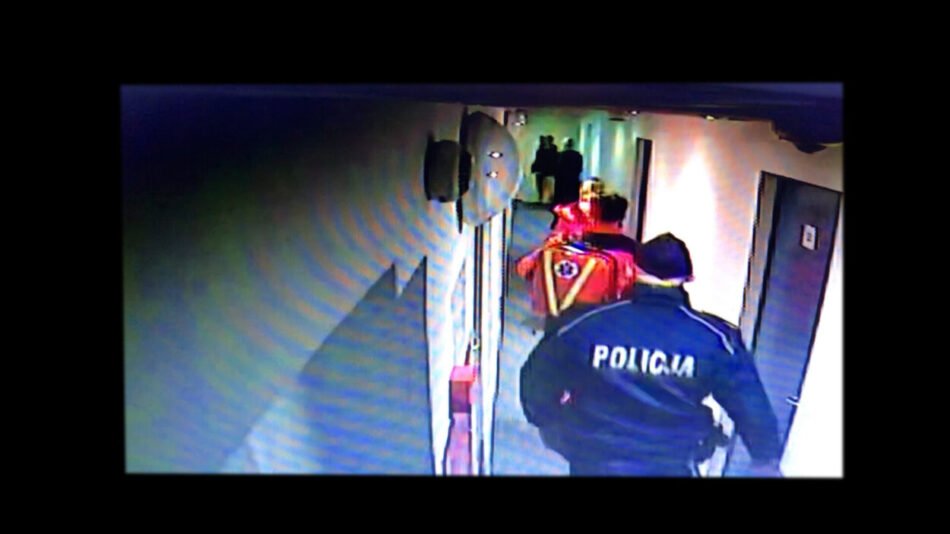
Belarusians’ participation in the annual GoEast Central and Eastern European Film Festival in Wiesbaden, Germany, which took place on April 23-29, was limited this time to Arciom Łobač’s project “Lithuania minor”. The concept of the future film about the inhabitants of the Belarusian-Lithuanian border region was selected for participation in The East-West Talent Lab, a creative laboratory for young filmmakers.
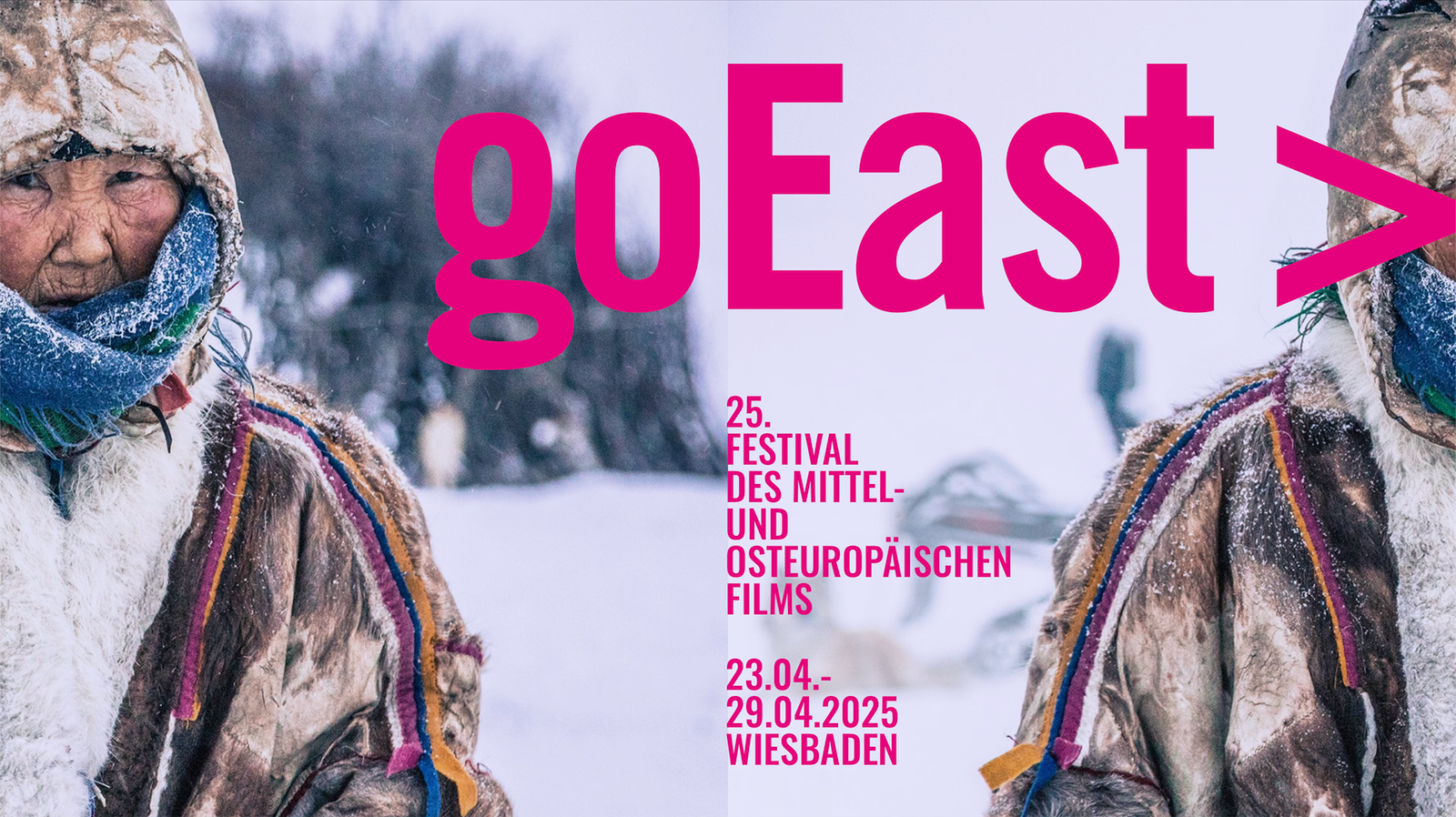
After a long break, new episodes of the podcast “Directed. Cut” [«Поставили. Сняли»] have been released, in which the hosts – film critic, former programme director of the Minsk International Film Festival “Listapad” Iryna Dziamjanava and film director Andrej Kudzinienka – together with experts once again review the significant pages of the history of national cinema.
May
Belarusian documentarians continue to work, including in Ukraine, covering current military topics. On May 4, the channel «Настоящее время» aired a documentary report by Belarusian authors Ksienija Hałubovič and Aryna Koršunava “Soldiers’ Wives” about Russian women searching for their husbands who disappeared in the war in Ukraine.
The documentary-fiction film “Forest” by director Maryja Bułavinskaja won an award at the International Golden Saffron Documentary Film Festival in Turkey on May 10. “Forest” is a film about Stalin’s repressions in the Homieĺ region. The script is based on real events – the stories of people who were shot during the Great Terror. The film also uses archival video and audio in which eyewitnesses tell about the events of the 1930s. The film stars Aleh Harbuz, Sviatłana Zielankoŭskaja, Mikita Chvaluk and Maksim Šyško. On January 29, the authorities of modern Belarus recognized the film as “extremist” because it contradicts the version of official propaganda that attributes the mass murders near Homieĺ to the Nazi occupiers.
The Synopsis student short film festival was held in Minsk on May 15. The festival is organized by students of the Faculty of Philosophy and Social Sciences of the Belarusian State University. In 2021, the event went beyond the university and was held at the city level for the first time. Until now, the festival had an intra-faculty format and was called “Calvary Beavers” [«Кальварыйскія бабры»]. The organizers then said that the change of name and rebranding of the event symbolized both the development of the festival’s ideas and their growth as organizers. This year, Synopsis was held outdoors in the “Echo Dvor” space. In addition to the programme of short films, participants and viewers (upon prior registration) were expected to attend master classes in acting, composition, and frame construction, as well as an author’s lecture by film director Andrej Kudzinienka on the topic “Saddling the Tiger. How Modern Belarusian Cinema is Made”. The screening of the participants’ films was followed by comments and discussions with invited experts, including the already mentioned Andrej Kudzinienka and the classic of Soviet Belarusian cinema, director Viačasłaŭ Nikifaraŭ. In total, the Synopsis festival programme featured seven debut short films.
An ethnic Belarusian, Ukrainian citizen and Berlin resident, Siarhiej Łaźnica took part in the competition programme of the world’s most prestigious auteur film festival in Cannes, France, with his new film “Two Prosecutors”. The film forum took place this year from May 13 to 24. This is Siarhiej Łaźnica’s fifth Cannes Film Festival. The film “Two Prosecutors” was shot in Riga with the participation of producers from Latvia, France, Germany, the Netherlands, Romania and Lithuania with an international film crew and cast. The film, based on the prose of the Soviet dissident writer from Kharkiv Georgy Demidov, tells the story of the Soviet totalitarian penal system of the 1930s in the post-doc style characteristic of Łaźnica. The sound engineer for the film, as with almost all of Siarhiej Łaźnica’s feature and documentary works, was Belarusian Uładzimir Hałaŭnicki, who has been living and working in Vilnius for several years.
“Two Prosecutors” received the François Chalais Prize, an award from the journalistic community that is awarded annually in Cannes.
Let us remind you that the film adaptation of Vasil Bykaŭ’s short story “In the Fog” of the same name, also filmed by Siarhiej Łaźnica in Latvia together with the Belarusfilm film studio, in 2012 became the only example of the participation of national cinema in the main competition of the Cannes Film Festival during the time of independent Belarus.
In May, the creative laboratory “Chronotop.Reels” [«Хранатоп.Reels»] was operating in Minsk. It was held on the basis of the film school “Kinocollider”, which is best known for its film club with screenings of world auteur cinema. The curator of the project is the co-founder of “Kinocollider” [«Кінакалайдэр»], director Andrej Kudzinienka. “Chronotop.Reels” became the ideological continuation of Andrej Kudzinienka’s multimedia project “Chronotop”, which has been successfully held in Belarus and abroad since 2015. The meaning of the project is the creation of short visual works by groups of filmmakers – beginners and professionals – which are then combined for screening in a single almanac.
After major renovations, one of the largest state cinemas in the country, “The Moskva”, opened in Minsk, where three smaller ones were added to the large hall. At the same time, the capital’s film distribution company permanently closed the iconic cinema “Dom Kino”, the former “Partizan”, which had existed since the mid-1970s, due to poor economic performance. After reconstruction, the building of the former cinema was transferred to the Minsk Palace of Children and Youth, as well as the pro-government youth organization BRSM.
June
A big and very significant event for Belarusian cinema was the victory of Minsk documentary filmmaker Anastasija Mirašničenka’s film “Welded Together” [«Звараныя разам»] at the prestigious festival in Sheffield, UK. The film about a welder girl from Brest, Kacia, who is forced to take care of her little sister and at the same time seek her own happiness, had its world premiere in England. The festival’s main jury awarded the Belarusian director a prize with the following words: “This is a portrait of resilience and strength – both of the main heroine and of the community that shows solidarity. The film emphasizes the contrast between the generosity of people and the harsh realities of alcoholism in Belarusian society. An honest and tender portrait of a young woman who is desperately trying to keep her family together”. “Welded Together” is a joint project of production companies from France, the Netherlands and Belgium. A few years ago, the project was recognized as one of the most promising at the world’s leading documentary festival, IDFA, in Amsterdam.
Anastasija Mirašničenka became widely known in 2014 after the premiere of her debut feature film “Crossroads” about a homeless artist Valeryj Laškievič. In 2017, her film “Debut” about the Homieĺ penal colony for women participated in the IDFA competition and received a special prize at the Krakow Film Festival, and was also nominated for an Oscar from Belarus.
The film by Mara Tamkovič “Under the Grey Sky”, the prototypes of the main characters of which were Belarusian political prisoners Kaciaryna Andrejeva and Ihar Iljaš, received the main prize “Golden Amber” at the 44th festival of film debuts “Mlodzi i Film” in Koszalin, Poland. The jury added the following justification: “For personal, creative and social courage. For a voice in history and for history. The closest and most silent. For tenderness towards its heroes and the magic of observation. This film screams with its silence and strikes with helplessness”. We remind you that the film, shot in Poland, became the full-length debut for the Belarusian, who was educated at the Warsaw Film School. “Under the Grey Sky” was first shown a year ago at the prestigious TRIBECA auteur film festival in New York, and then was awarded the best debut at the All-Polish Feature Film Festival in Gdynia, and was also released in Poland.
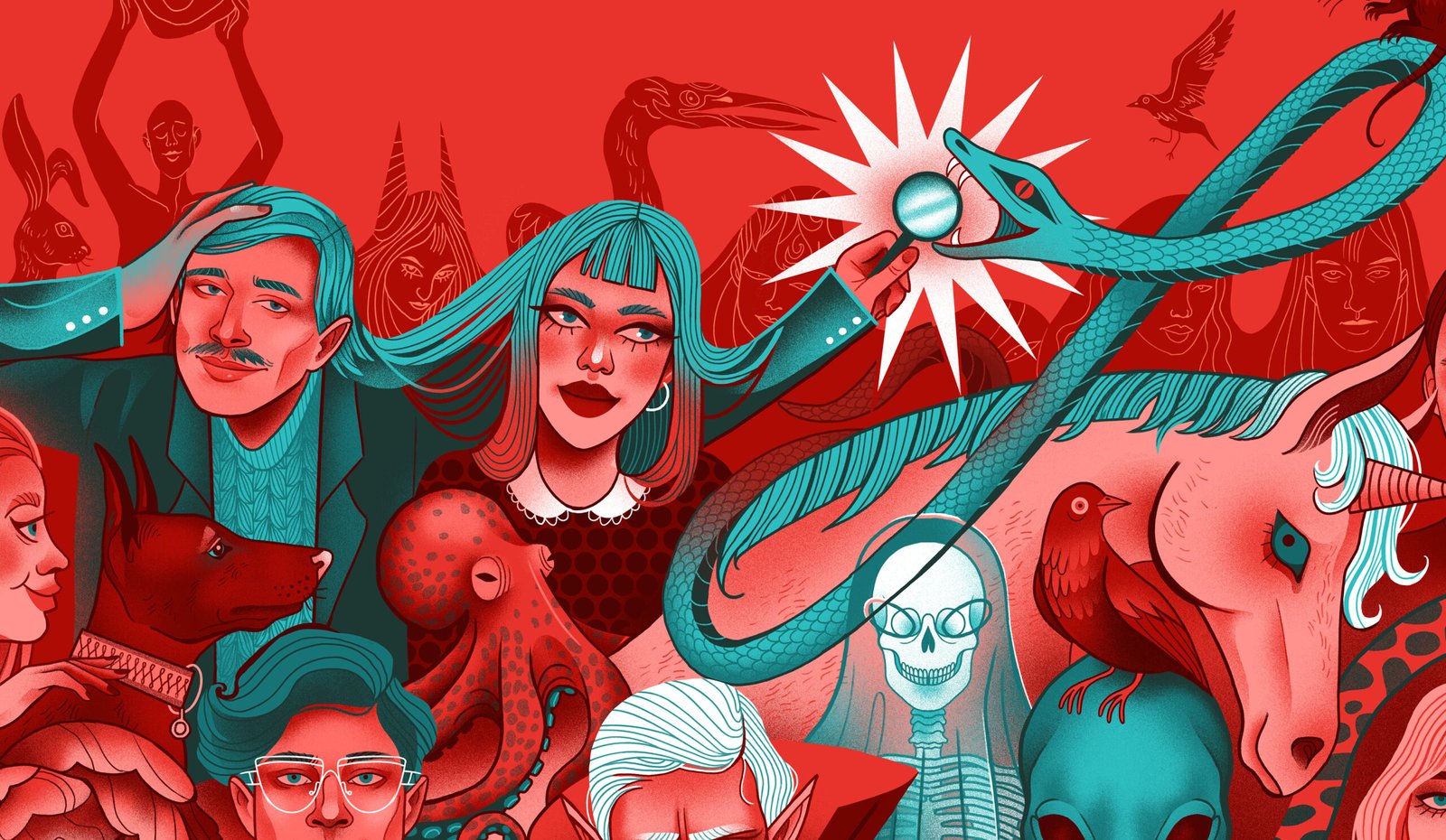
The Warsaw film club “Kinakola”, organized by the Belarusian producer Mikałaj Łaŭraniuk, is actively working. On June 13, the Belarusian Youth Hub in Warsaw hosted a screening of Raman Šel’s documentary film “The Last Words”. The film is dedicated to Aleś Puškin and contains unique footage shot during the last two years of the artist’s life. The film was part of the screening programme of the Belarusian film festival “Bulbamovie-2024”. On June 25, the film club hosted a mini-retrospective of the Belarusian documentarian Andrej Kuciła, who has been living in Poland since 2021. Viewers could see his short films created in 2008–2020 – “Focal Distance” [«Фокусная адлегласць»], “My Place” [«Сваё месца»], “Passing By” [«Мімаходдзе»], “I Need Hugs” [«Мне трэба поціскаў»] – and talk to the author.
In early June, it became known that the Dutch initiative NFF+HBF allocated 75 thousand euros for the production of the project by Darja Žuk “Exactly What It Seems” based on the story of the same name by the Belarusian writer from New York Taćciana Zamiroŭskaja. The writer also became a co-author of the script for the future film. The co-producer of the project, the founder of the Northern Lights Film Festival and the online cinema VODBLISK Vola Čajkoŭskaja represents Estonia in this case. Partners from the Polish side are also expected to join the future production of the film.
NFF+HBF, a joint initiative of the Netherlands Film Fund and the Hubert Bals Fund, is particularly interesting because the projects financed by it automatically have the right to premiere at the Rotterdam International Film Festival, one of the world’s leading forums for auteur cinema. For example, in 2004, Andrej Kudzinienka’s film “Occupation. Mysteries” [«Акупацыя. Містэрыі»] was shown in Rotterdam, financed, among other things, by the Hubert Bals Fund.
On June 10, Alaksandr Łukašenka unexpectedly visited the National Film Studio “Belarusfilm” in Minsk, where he expressed dissatisfaction with the quality of Belarusian film production, its box office and propaganda potential. State filmmakers were also blamed for the low artistic and spectacular level of films, and the lack of bright premieres. After public humiliation and promises to soon rectify the situation, the film studio and the Ministry of Culture launched a frantic PR campaign for new products – the films “One for Two” (about the Belarusian military pilots who tragically died in 2021), and “A Class Teacher” (a film dedicated to graduates of pedagogical universities who are distributed to rural schools). The working material of the latter film was even shown to a carefully selected focus group at a closed screening in the capital’s “the Moskva” cinema. “A Class Teacher” is directed by Kirył Chalecki, who previously made a name for himself with the propaganda short film “Cultural Code” (2024), which is being forcibly shown at organized screenings in state-run cinemas.
On June 11, 36-year-old Andrej Hryńko suddenly passed away. In addition to filming music videos and commercials, he directed the horror film “Vampires” [«Упыры»] with Maksim Siry, and in 2021, at Belarusfilm, he co-authored the author’s drama “This is Me, Minsk”. The latter has not yet seen the screen due to censorship reasons.
The death of the classic director Valeryj Rybaraŭ on June 25, the day before his 86th birthday, became a symbolic line under the artistic legacy of the former “Belarusfilm”. The author of the documentaries “Tonezh Women” [«Тонежскія бабы»], “The Silent Violin” [«Нямая скрыпка»], the feature films “Live Cut” [«Жывы зрэз»], “Someone Else’s Estate” [«Чужая вотчына»], “Witness” [«Сведка»], “My Name Is Harlequin” [«Мяне клічуць Арлекіна»], Valancin Vinahradaŭ’s assistant on the masterpiece “Eastern Corridor”, Valeryj Rybaraŭ was one of the rare supporters of the national vision of cinema in Belarusian Soviet cinema. The author’s extreme uncompromisingness, the rejection of the low production level of “Belarusfilm” for many years did not allow Valeryj Rybaraŭ to return to the profession.
For the Belarusian cinema, which is practically devoid of significant creative figures, the departure of both directors, a veteran and a young one, was a great loss.
The absence of figures, the absence of minimal creative and human freedom hinder the development of cinema in Belarus. The lack of funding, geographical and human disunity get in the way of Belarusian filmmakers in emigration.
Theatre: with Russia and “Victory”
The more time passes since “that very” 2020, the more the domestic theatre changes. Russia is increasingly drawing it into its space: from “innocent” tours of the Russian hinterland, inviting artists from this country and staging Russian works – to announcing a trip to the occupied Crimea. Opposing this, relying on your own culture and traditions is the only chance to survive and wait for better times. What has (not) come of this – read in our review.
Reaction to the new financing system and announced tours in Crimea
In early 2025, the domestic theatre switched to a new financing system: 50% is now allocated by the state, 50% is earned by the collectives themselves. Soon, in the best traditions of Soviet times, state publications conducted a real ideological micro-campaign in support of the innovation. The merits of the new model were discussed in the Slonim and Brest drama theatres, as well as in the Opera Theatre.
Why should such statements be treated with distrust? The new model forces theatres to adapt to new conditions by all means. For example, the director of the Hrodna Drama Theatre, Volha Bahdanovič, admitted that the troupe accepts comedies from Russia – they say, this is the repertoire that “has become popular with the residents of Hrodna, Russian tourists, who note that it is more interesting and cheaper here”. As you can see, the desire to make money (and even partially at the expense of tourists from a neighbouring country) prevails over solving any artistic tasks.
And in the Viciebsk “Lalka” theatre they state that performances for adults have almost completely disappeared (this was influenced by both the decrease in state aid and the departure of young actors). There are no funds to update this part of the repertoire and to carry out new productions.
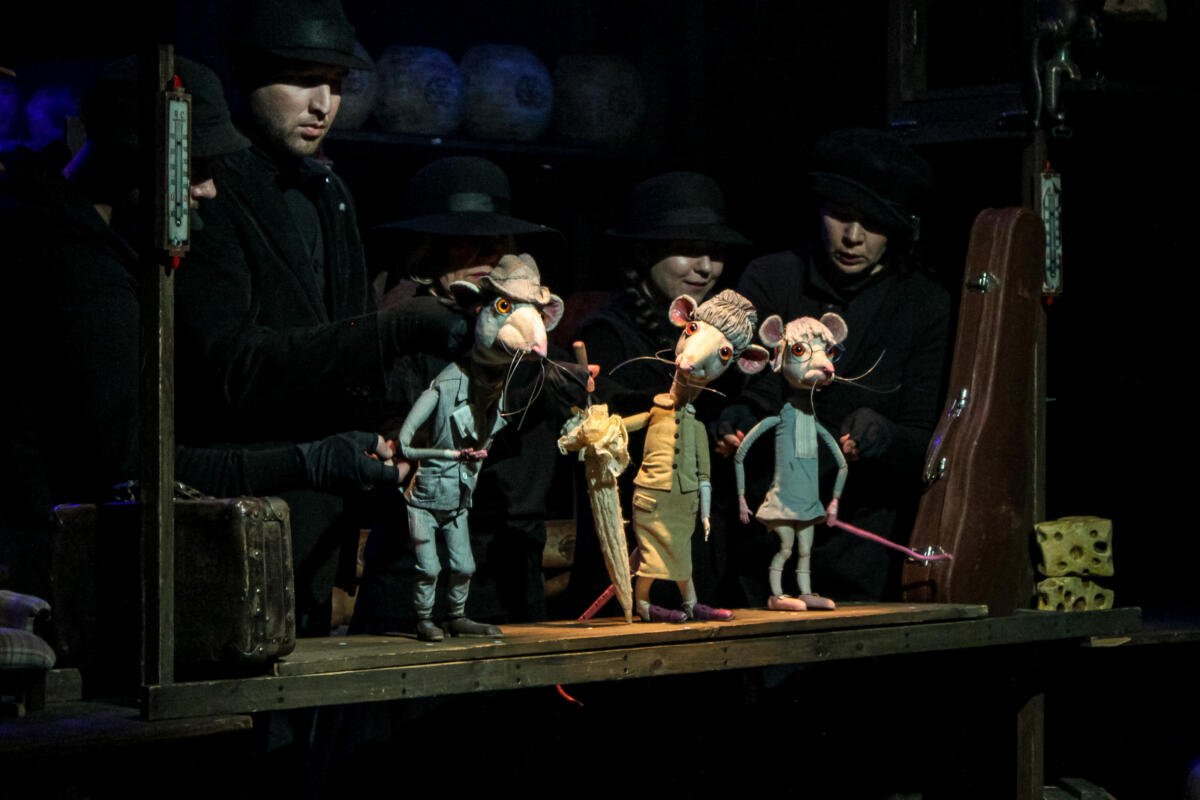
One of those theatre groups that is doing well in the new conditions is the Opera theatre – it is not for nothing that it (and not, for example, the Janka Kupała Theatre) has been perceived by the authorities as the main theatrical venue of the country in recent decades. The evidence of this thesis is the cascade of titles, often inaccessible to other troupes. And concerning a big budget: the sought-after Moscow director Georgy Isaakyan was invited to the production of “The Maid of Orleans”, the last premiere of the season, which not all groups can afford. By the way, this director drew parallels with the present and made the plot relevant (the main character lives in our time and tries to understand what it means to be Saint Joan and how to survive her path). In a modern opera house, such a creative decision has long ceased to be surprising, but in Minsk it happened, perhaps for the first time (until now, the plot was sometimes mechanically transferred to other eras, but without rethinking).
But you have to pay for everything. After a tourist, sorry, creative trip to Nicaragua, the team is sent on tour to the occupied Crimea – to perform at the “Khersones” festival in Sevastopol. The troupe is “mostly against” the trip, but the theatre is putting pressure on the artists, including hinting at possible problems in their future careers. Nevertheless, many have written refusals, in particular – members of the orchestra. There is information that the artists are being forced to sign a document: so to say, the theatre is not responsible for their safety on tour. As we learned, the visit to Crimea is not even registered as a business trip – just as a “hackwork”. The coercion is carried out by a former police officer Vadzim Martysievič, who now holds the position of deputy director of the theatre.
This news is simply the quintessence of current state policy in the field of culture. The authorities are not concerned with security issues (if something happens, it will turn out that the person went to the Crimea on his/her own). No one is interested in a person’s wishes – coercion reigns supreme. Norms of law (the Crimea is a territory occupied by Russia) either. It is symbolic that the ballet troupe – four performances of “Giselle” are planned on the peninsula – will be led by a “legionnaire” – Russian Artem Makarov, who since May of this year has been not only the theatre’s chief conductor, but also its artistic director. Meanwhile, in parallel, he works as the chief conductor of the Moscow Children’s Musical Theatre named after Natalia Sats, and, according to our information, rarely appears in Minsk (but the trip to Nicaragua was not without him).
The alleged tour to the Crimea is indignant with a visit to the occupied territory, as well as the obvious lack of security measures. There are no such problems with trips to the native territory of Russia. Therefore, tours of domestic groups to this country are becoming a common phenomenon. For example, the Gorky Theatre travelled to Tambov, Omsk and Kurgan. The Youth Theatre was in Novokuznetsk and Novosibirsk. This year, the Musical Theatre visited Tula, Voronezh, Bryansk, Stavropol, Penza and Kaluga. All in all, in the current conditions, Russia is almost the only possible destination for tours.
The Janka Kupała Theatre’s “Victory” and the Puppet Theatre’s sold-out performances
The remaining groups continue to exist in the usual conditions. For example, for several years now, tickets at the Janka Kupała Theatre have been easily available almost before the premiere. The artistic director of the group, Volha Niafiodava, states that the theatre has still not been able to recover after the mass exodus in 2020. They still can’t find employees. There are also not enough actors, so the administration has to invite actors from other theatres to play certain roles.
The only changes that have occurred are the next, 3rd “Victory” [“Перамога”] festival, which is held on the basis of the Janka Kupała Theatre. This year its programme has expanded significantly: if in 2023 there were eight performances on the bill, now there are as many as 15. The programme includes “Simon the Musician” [«Сымон-музыка»], productions based on Kir Bulychev, Ivan Mielež and Kandrat Krapiva – these works have nothing to do with the theme of World War II. Thus, the authorities, while promoting their main theme, simultaneously attract viewers to the forum who are not too interested in it. In addition, the geography of “Victory” has expanded: the one-man show “Blockade Diary of Alexandrinka” from the Russian collective of the same name has come to Minsk. For the first time, discussions were held within the framework of the festival after each screening with the participation of critics who remained in the country and are working in state institutions. Again, for the first time, master classes were held at this forum – the programme became more practice-oriented. Therefore, the jokes that Minsk used to have a TEART festival, and now it is “Victory”, have been given a second wind.
A lot of war and a little peace. Belarus and Russia. The Janka Kupała Theatre as the main venue. For the new generation that came to the theatre in the last five years, this is the norm. For them, the forum has really taken the place of the predecessor, because there is no alternative. It is interesting that this year, after the end of the festival, they decided to organize it “not annually, but for the anniversaries of the Victory”. But what does this mean? Counting down the anniversaries of the events of 1944 (the liberation of Belarus) and 1945 (the end of the war)? However, then the forums will be held two springs in a row – and then with a pause for several years. We’ll see what happens.
Against this background, the capital’s Puppet Theatre continues to live its rich life. Its repertoire also does not miss the military theme. But the contrast with others is obvious. For example, the Theatre-studio of the Film Actor is organizing a real “tour”: during the five days of May, performances of its “Privates” [“Радавыя”] took place in front of the Youth Parliament, the National Bank, the representative office of the Russian Cooperation in Belarus, teachers and students of the Minsk Financial-Economic College and the Gymnasium-college of Arts. But we are talking about a performance based on the play by Alaksiej Dudaraŭ, written back in the 1980s. But the main director of the capital’s Puppet Theatre, Jaŭhien Karniah, chooses another work that has not yet been in demand in similar theatres – “Sign of Trouble” [“Знак бяды”] by Vasil Bykaŭ and creates the production “Khutor” based on it. This gives him the opportunity to follow the rules of the game and retain the possibility of his own expression. By the way, little by little this collective is becoming a Karniah’s author’s theatre, which no one in modern Belarus can afford.
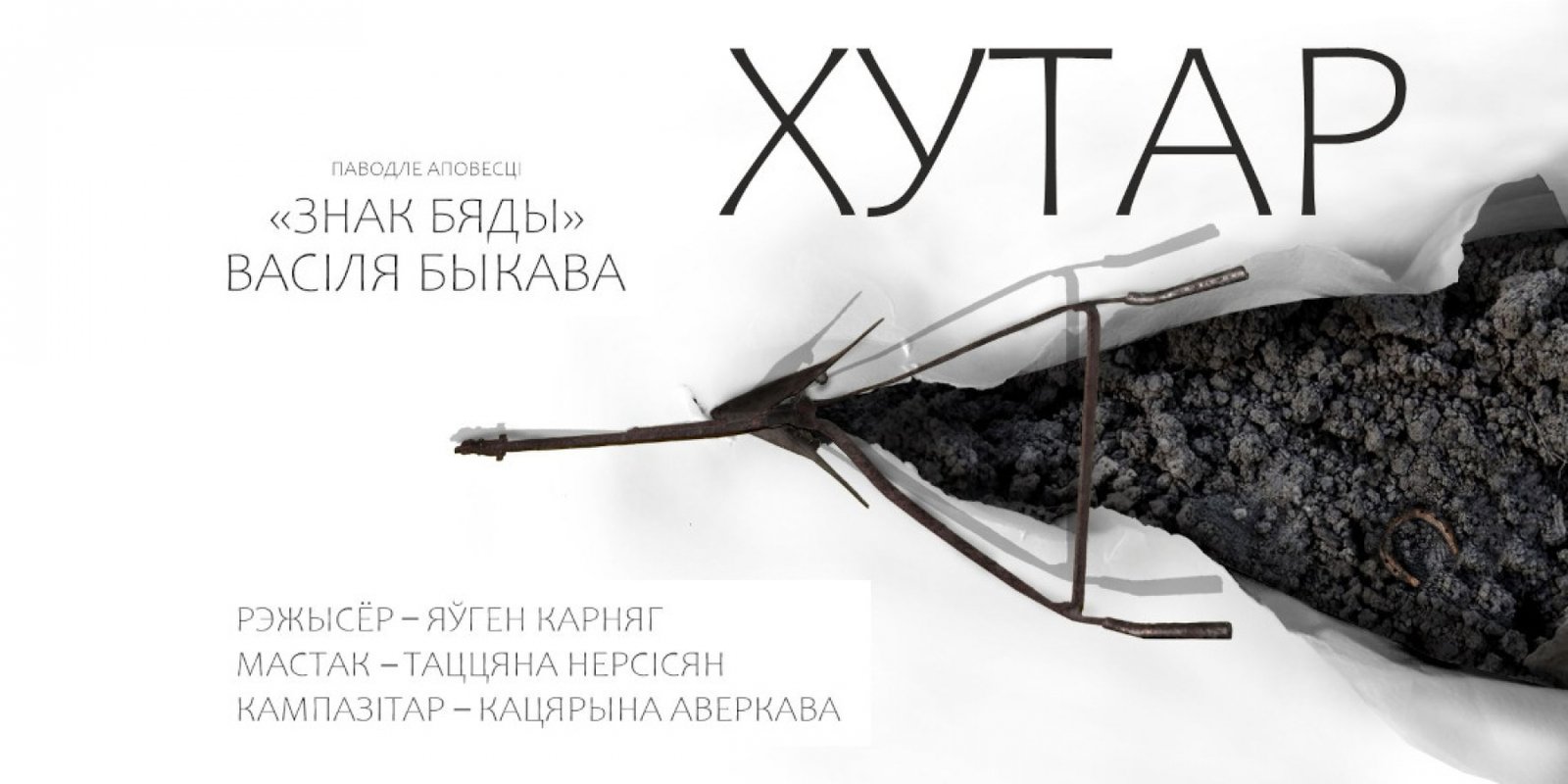
It is not surprising that theatregoers, as in previous months, are literally storming the box office. Spectators complain about the impossibility of buying tickets. The management is outraged by bot attacks and the impudence of overbidding. In the absence of competition and excitement among the public, the theatre can remain and be perceived as a cult for a long time. Because for such a status, a beautiful appearance alone is not enough: the “Instagram” performances of director Taćciana Sambuk, which are performed at the Youth Theatre, will not let you lie. You also need a “word of mouth”, a legend and history (which, for example, are still lacking in the quite popular choreographic performances of the capital’s Youth Theatre). In the Puppet Theatre – Karniah is not a “novelty” and did not come to an empty place – they are there.
Renovation of the Musical Theatre and the tour of the “Kupałaŭcy”
The remaining events and trends will be outlined superficially.
The connection with Russia remains extremely strong, which manifests itself in various forms (in addition to those we mentioned above). Through the Russian language – it is in it that the Homieĺ Youth Theatre “King Stakh’s Wild Hunt” by Uładzimir Karatkievič is performed, although the classic of Belarusian literature wrote in his native language. Through the choice of works – for the production in the Musical Theatre, the musical “Roman Vacation” is being prepared (based on the film of the same name) – the work was written by the Russian composer Andrei Krotov. By the way, they plan to close this theatre for reconstruction in early 2026: to modernize the building, update the equipment, stage, halls and other premises. The Musical Theatre is perhaps the last theatre in the capital that has not yet been touched by the renovation.
Repression continues. The fact that is on the surface – the website of the theatre bureau in Warsaw BY teatr and its social networks have been added to the list of “extremist materials”. But this is only the tip of the iceberg – many similar facts are now being told only with a promise not to make them public.
In the coverage of theatre news, the media is starting to rely on TikTok. In the conditions of the almost complete absence of reviews, this is quite logical. But there is a problem: the opinions of amateur spectators are trusted a priori. For example, the audience was outraged by the artistic level of one-act evening ballets “Leaps” (“Bolero”, “Leaps of Death”, “Carmen”), staged by Ihar Kołb. From private backstage reviews, we understand that the production was really rated low. But it may happen that the audience will not understand the innovative production – and then this opinion will be broadcast in the media. In addition, the audience suggests that the productions of Valancin Jelizarjeŭ, staged back in the 1970s, be returned to the repertoire. It is difficult to imagine a modern expert who would promote such an idea.
Abroad, the “Kupałaŭcy” have become more active. Having performed four performances in Warsaw in the “Theatre Week” format at the end of March (with online broadcast on YouTube), they did not stop there. “The Comedy of Judith” was shown in Lublin in April, “Zekameron” was brought to Vilnius, Daugavpils and Zurich. At the end of June, the premiere of the play “The Suitcase” [“Валізка”] directed by Alaksandr Harcujeŭ took place.
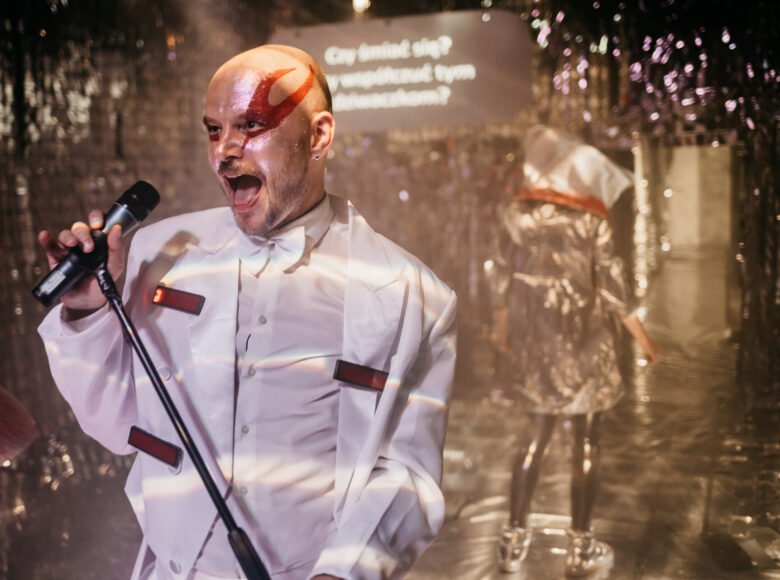
Other initiatives have also taken up the baton. In June, the “Tutejšy Theatre” [“Тутэйшы тэатр”] staged the first performance of the documentary play Status, dedicated to the topic of the HIV. In the same month, the “Act Two” [“Дзея другая”] team was preparing the production of “Bykaŭ and His Devils” – the premiere had to be postponed for certain reasons. Even earlier, in May, the Warsaw Studio Theatre hosted the premiere of the play “2049: Witaj, Abdo” based on the play by the domestic playwright Mikita Ilinčyk – a work dedicated to the problem of migration. Actress Palina Dabravolskaja returned with a victory from the festival in Romania, where she showed her sound monodrama “SarmaTY/JA”.
This shows that the theatrical process abroad continues. And the attempts continue – both there and here, directly in the country – to preserve their identity and distinctiveness.
Music: The return of major festivals and international success
Belarusian music life successfully strengthened its growth points from April to June. There were successes both at the international and local levels. Popular festivals returned to the country, musicians presented about 500 releases, and two bands showed an incredible international leap in their careers. Despite this, artists both in exile and within the country continue to face difficulties. One thing they have in common is the impossibility of fully engaging exclusively in music.
Belarusian bands continue to reach the international level
Belarusian artists have shown their worth on the international level. The most popular Belarusian band in the world right now, Molchat Doma, performed at KEXP. The performance was recorded back in March, but became publicly available in May. The Belarusians played four songs, two of them from their latest album, “Belaya Polosa”.
KEXP is a radio station founded in Seattle by staff and students at the University of Washington in 1972. In 2006, the station launched a YouTube channel with exclusive studio concerts. At one time, the channel featured Florence and the Machine, Arctic Monkeys, The XX, Alt-J, Gus Gus, and other famous artists.
At the end of April, metalheads Extermination Dismemberment announced that they would perform at Wacken, one of the world’s leading metal festivals. By the way, all 85,000 tickets for the festival were sold out. This year, the lineup includes Guns N’ Roses, Gojira, Papa Roach, Machine Head and others. Extermination Dismemberment is the second Belarusian band after Irdorath to play at this major festival.
Electronic artists Rap&Vogue will perform at the Waves Vienna festival in October, and then will go on a small European tour.
The band “Borisovskiy trakt” was marked by two events at once. The Minsk band performed at the Bandlink showcase in Moscow, where they were noted by the editor-in-chief of VK Music and the former music editor of “Evening Urgant” Sergey Mudryk. The band also collaborated with the restaurant mak.by. In the joint video, we can hear their latest single “Summer”.
Three Belarusian bands performed at the Music Week Poland showcase: “Cassiopeia”, Volski and Son of Deni.
The return of major festivals and the emergence of new ones
Inside Belarus, the majority of concerts were given by Russian artists. The band “Ruki Vverh!” performed at the “Minsk Arena” three times in a row. It was sold-out three times. For indie fans, the band Sirotkin performed at Prime Hall in mid-May.
The band “Drazdy” – a group with the busiest touring schedule – announced the end of its stage career. The band’s leader Vital Karpanaŭ explained this decision by fatigue and the inability to organize concerts in regional cities. Karpanaŭ noted that this is due to the activity of some hyperactive bloggers. It is not known who exactly he meant, but from indirect signs it can be assumed that this is about the pro-government blogger Volha Bondarava, who has repeatedly criticized “Drazdy” in her posts.
Several large-scale festivals have burst into the country’s concert scene after a break. After a seven-year break, Stereo Weekend returned, with a lineup of Russian and Belarusian performers. The headliners were Antokha MC, “Moya Michele”, and Mnogoznaal.
Lidbeer is returning after a two-year break. The festival will also feature Russian stars: Yulia Savicheva, Alexander Pushnoy and Anton Tokarev. Among the famous Belarusians, “Borisovskiy trakt” will perform there.
In mid-June, belbet fest was held at the Dynamo stadium. Russian artists also performed there: “Diskoteka Avariya”, “Moya Michele”, Lyusya Chebotina, etc. Belarusians were represented by the trio Nkeeei, uniqe and ARTEM SHILOVETS.
If the aforementioned festivals have a neutral ideological component, the same cannot be said about the “Solntsestoyanie” in Pružany. Most of the headliners here are Russian stars who supported the aggression against Ukraine. One of the hidden organizers of the festival is Aliaksandr Zajcaŭ, a businessman who previously owned the football club “Dynamo-Brest”. In 2024, he registered a legal entity “Solntsestoyanie”. The public face as one of the organizers of the festival is Dzmitryj Rakusaŭ, the former creative director of “Dynamo-Brest” and a former employee of Zajcaŭ’s company Sohra Group. From 2004 to 2013, Rakusaŭ worked in the police, and now holds the position of head of the “First Production Company”.
In parallel with the festivals and concerts of Russian performers, performances by Belarusian artists also took place. In May, the MotoPovodBrest festival was held near Brest, where Iva Sativa, Passive Voice, and “Sny siney sobaki” [“Dreams of the Blue Dog”] performed. The latter also played a joint concert with the Russian post-punk band “Durnoy vkus” in early May. Iva Sativa held a solo concert in Hrodna at the end of June. In Minsk, Jan Kłapocki performed on his birthday.
The authorities have shown attempts to attract young people to their events. In Hrodna, the authors of the hit “Glamour” performed at “School graduation party over the Nioman” – Uniqe, Nkeeei, and ARTEM SHILOVETS. In Minsk Arena, the headliner of the “last bell” was Oleg Miami, and in Mahilioŭ, Olga Buzova performed.
Problems with “tour permits” and lack of venues for performances
The context in which artists exist within the country remains challenging.
Musicians in Belarus continue to face a shortage of venues for performances. According to them, there are few places to hold a concert. In mid-April, the Bruge club closed. The reason was a lack of money and the reconstruction of the building in which it was located.
In Minsk, performances by Belarusian bands are actively held at several venues, which can be counted on the fingers of one hand. And if the capital has any alternative, then the situation in the regions is much worse. In regional centres, there are literally one or two cafes where concerts of Belarusian bands are held. One of the worst situations with venues has developed in Brest. The few places that exist prefer cover bands, which definitely bring in listeners.
The situation with the organization of concerts is not improving either. In addition to the fact that almost every performance requires an official permit, there are no more event organizers. They are now mostly state institutions, such as regional philharmonics. This situation forces Belarusian artists to perform at “home gigs” in order to bypass communication with state institutions.
For musicians in exile, the situation with concerts looks much better. In May, “NaviBand” gave a big concert at the Progresja club in Warsaw. “Cassiopeia” organized a small European tour, and “Dzieciuki” announced a joint performance at Polish concerts with folk-punk legends “The Real McKenzies”.
Sometimes artists from Belarus manage to give concerts outside the country.
The repressions against musicians do not stop. At the end of June, the leader of the band “Pałac” Aleh Chamienka was detained. Later it became known that a criminal case had been opened against him. The social networks of the band “Dzieciuki” were recognized as “extremist materials”. The same was done with the social networks of the band “Brutto”.
Russian artists feel much more confident in Belarus. On June 22, on the Day of Memory and Sorrow, “Lyube” and “Chicherina” performed in Brest – bands that actively support Russian aggression in Ukraine. Polina Gagarina performed in Hrodna on May 9. In general, the concert schedule in Belarus continues to consist of the vast majority of Russian artists.
Releases from legends of Belarusian music and new stars of the local scene
From April to July, Belarusian artists presented about 500 releases (songs, albums, singles, EPs). Among the notable new releases, it is worth noting the debut mini-album of the band Passive Voice “Everything Will Be Alright in the End” [«В конце все будет хорошо»]. The guys approached the release conceptually: they made an offline presentation, thought out the images on the album and shot snippets for each track.
The post-punk band “Sny siney sobaki” [“Dreams of the Blue Dog”] also worked conceptually. They shot a provocative snippet for the song “Art Deco”. It turned out to be very actual and ironic. Pop-punk band Zvonku makes their full-length album conceptual as well. They shot a video for each of their tracks, one of them in the Horvat Palace in Naroŭlia.
After a ten-year break, “Krambambulya” returned with the release. The song “Only Victory” [«Толькі перамога»] came out as cheerful ska-punk with images and metaphors typical of Lavon Volski. Siarhiej Michałok also returned with a new song. “Lyapis Trubetskoy” released the track “Ockham’s Razor” [«Бритва Оккама»]. The band’s fans say that it is not new, but was recorded for the third album of the band “Drezden”, which never saw the light of day.
Ivan Kirčuk also pleased the audience. After quitting “Troitsa”, he launched the 3MY project with the musicians from Canada. The band released the album “Nekrut”, which is based on the story of an eternal soldier. The plot takes the listener back to the times when military service could last as long as 25 years.
The freak-pop band “Cassiopeia” has also returned with a new album. “Bipolar Star” is a collection of dark, self-ironic fairy tales that make you want to dance.
Belarusians continued to gather their millions of listeners on streaming. On Spotify, Molchat Doma is still the leader in terms of listening, with almost 3 million listenings per month. On Yandex Music, the leaders are Iowa and Bianca — they have almost 6 million listenings. It is interesting that there are many times more Belarusian “millionaires” on Yandex Music than on Spotify: 38 artists versus 9.
Musical life in Belarus continues according to its rather vague laws. Artists are taking small steps to promote their work. Cultural life in the country has narrowed down to a completely local context. Nevertheless, hundreds of releases appear here every month, and many of them are worthy of attention.
Belarusian music within the country has moved away from large venues to a more chamber format. On the one hand, this allows musicians to strengthen their community and hold on to their people. On the other hand, it is a logical step to preserve themselves and their identity. No one knows what could be the reason for another concert ban or appearing on unofficial blacklists.
In emigration, the development vector is much clearer. Some bands are trying to break into the European and Polish markets. They organize tours, participate in showcases, festivals and competitions. Others continue to play concerts for Belarusians in emigration, thereby uniting the communities around them.
Traditional culture: trends in Belarus and abroad
In another review of events in the sphere of traditional culture, we analyze trends in this area, abandoning the thematic division into holidays, dances, songs and crafts, but keeping it in mind. The subsection on the most significant publications remains, which we recommend paying attention to. Among the noticeable trends within Belarus are great attention to crafts and the instrumental use of traditional culture to emphasize rapprochement with Russia. Abroad, we noted the joining of Belarusian groups to local cultural initiatives and a large share of entertainment content in video productions that popularize traditional culture.
The most noticeable forms of traditional culture: crafts in Belarus, holidays and dances abroad
Of all the types of traditional culture, crafts are most often featured in the media when we talk about the situation inside Belarus. In addition, there are very diverse ways of popularizing them. Numerous exhibitions of folk art masters are held in the cities. Lectures on regional costumes take place at various venues in Minsk. You can often see announcements about master classes. At Easter time, there are especially many invitations to learn how to make pisanka [egg decorating in Slavic culture], but, unlike abroad, we did not come across any public information about weaving Easter spiders, despite the simplicity of the technology, which we noted in the previous review as one of the factors behind the popularity of such activities among Belarusians abroad at Christmas. Perhaps another factor influencing this is the relatively easy availability of straw on European marketplaces.
The style of malavankas [Belarusian painted carpets] continues to gain popularity: it is used in workshops for painting bags, painting on glass, and decorating clay dishes. The Vietka Museum of Old Believers and Belarusian Traditions conducts active educational activities in the virtual space, including devoting a lot of attention to traditional textiles. We recommend watching the videos on its YouTube channel. An original form of popularization of crafts is used at the Museum of Traditional Hand Weaving of the Paazierje in Polack: there is a children’s interactive playground “One, two, three – collect the nabivanka!” [“Раз, два, тры – набіванку збяры!”] operating there all summer. [Nabivanka is the art of woodblock printing on textiles.]
It is not surprising that crafts are given more attention in Belarus than abroad, because the majority of the material base, so to speak, is located within the country. And if in the spring people were invited to weaving schools in Hudzievičy and Lida, then organizing them abroad would be problematic.
Abroad, celebrations and dance events attract the most attention in the media and social networks. This is explained by the large number of such events relative to the total number of Belarusians in a particular country and the involvement of the diaspora in these celebrations. Inside Belarus, no one will be surprised by a celebration organized by a state cultural institution, and it is unlikely to become a major informational occasion.
Instrumental use of traditional culture in state institutions to emphasize rapprochement with Russia
We noticed such initiatives mainly in the Mahilioŭ region. For example, the Mahilioŭ Museum of Ethnography organized an exhibition “Belarus – Russia. Intertwining of Cultures”, and the Mahilioŭ Museum of History organized a Belarusian-Russian (this is emphasized on the poster and in press releases) exhibition project “Folk Costume – A Living Tradition of Destiny”. The ensemble of cymbal players “Heritage” [“Спадчына”] from Babrujsk performed in Togliatti, Russia, as part of the events dedicated to the Day of Unity of the Peoples of Belarus and Russia. The art group “Mahiloŭcy” took part in the “Dance and Sing, Young Russia” competition in Moscow. The Mahilioŭ Regional Methodological Centre of Folk Art, together with cultural institutions of Bryansk, organized an exhibition dedicated to the traditional culture of the two regions “Slavic Povada – a Joy to the Soul!” Some of the above-mentioned events took place within the framework of a cooperation agreement between the Mahilioŭ and Bryansk regions. However, such attention to cooperation with Russia cannot be explained by this agreement alone.
In fairness, it should be noted that projects that emphasize the ties between Belarus and Russia are implemented not only in the sphere of traditional culture and not only in the Mahilioŭ region. For example, the National Art Museum in Minsk, together with the Russian Museum in St. Petersburg, at the end of 2024 – April 2025 showed the project “Russia – Belarus. Crossing of destinies” in two cities. However, outside the Mahilioŭ region, there is much less information about such events.
Video projects: from entertainment to educational
In some video projects of the Belsat TV channel that touch on the topic of traditional culture, it is worth noting the predominance of the entertainment component over the educational one. For example, in the film “The Wheel of Life” [“Кола жыцця”] by director Arciom Łobač, dedicated to traditional holidays, the expert declared in the credits never appears in the video. The viewer observes a change of beautiful shots from celebrations in the open air and conversations of the characters, this time filmed in the studio. From the programmes of the series “Podlasie Vacations” [“Падляшскія вакацыі”] (the first, second and third have already been released), an uninitiated viewer may not understand that some areas of Polish Podlasie are part of the Belarusian ethnic territory, how Belarusians appeared there in general and how Podlasie dialects are classified, since the video does not contain any expert comments on this matter or relevant maps (although they promise that at the end of the series of programmes the characters will create their own map of Belarusian Podlasie). But “Podlasie Vacations” is an interesting video in the style of a road movie, where local youth show their peers from Belarus their small homeland.
In the Belsat project about the historical traditional costume “Nitka Zorka” with the participation of Kaciaryna Vadanosava, an attempt is made to combine entertainment and educational components. According to our expert, this works quite well, the videos are quite informative. Recently, several issues on the topic of traditional culture have been published: about the sayans [women’s traditional dresses], men’s shirts, the Paniamonnie traditional costume, the expedition of Vacłaŭ Łastoŭski in 1928.
As an example of the superiority of the information component over the entertainment component, we can cite the film “Seed of Memory” (“Ziarno pamięci”) about the history of the Museum of the Small Homeland in Studziwody, directed by Beata Gyża-Czałpińska, released by the regional branch of the TVP television channel in Białystok. It was released in the series “Witnesses of Time” (“Świadkowie czasu”), from which you can also learn about other aspects of the traditional culture of Podlasie.
The demand for entertainment content can be explained by general trends in media consumption: it is increasingly difficult to keep the attention of viewers who are bored with watching expert “talking heads”. At the same time, Belarusian socio-political media have always declared their mission to preserve Belarusian culture, and it is worth considering whether predominantly entertainment content contributes to the successful fulfillment of such a mission.
Joining Belarusian bands abroad in local cultural initiatives
At the time of our previous review, it was already known that the Belarusian groups “Kasary” and “Kapela Tryhradzka” became the winners of the prestigious Stara Tradycja competition. They performed at a concert during the Wszystkie Mazurki Świata festival in Warsaw on April 23. In addition, the festival hosted a master class in Belarusian dances by the Kraków Kapela “Po Drodze”, which plays both Belarusian and Polish music, and a lecture by Siaržuk Doŭhušaŭ on Belarusian folk musical instruments. A kind of afterword to the festival was a dance party in Gdańsk on June 14, where the winners of the Stara Tradycja competition played together: the Polish Kapela “Barankiewicze” and the Belarusian “Kapela Tryhradzka”.
In April, several reports dedicated to Belarusian traditional music were presented at an ethnomusicological seminar in Warsaw.
In May, Belarusian musicians in exile took part in folklore events organized by Belarusians in Podlasie (the Museum of the Small Homeland in Studziwody near Bielsko-Biała): meetings in the tradition of “There by the May Dew” [“Там по маёвуй росі”] and in the International Festival of pipers, hurdy-gurdy [kołavaja lira] players and singers in Mielnik and Radziwiłłówka. Belarusians also performed at the Skamba Skamba Kankliai festival in Vilnius. In addition to the latter, the group “Belarusian Miracle” [“Беларускі цуд”] participated in the Days of Street Music in Vilnius.
The Belarusian band Volya from Seattle continues to participate in American festivals. For example, in May, they presented their new album “For a New Summer” [“На новае лета”] at the Northwest Folklife Festival.
Most likely, the participation of Belarusian groups abroad in local cultural initiatives will increase, because the longer a person is in emigration, the more connections and contacts they acquire, and the Belarusian diaspora does not have a closed lifestyle.
Most significant publications
The next, 12th issue of the journal “Belarusian Folklore: Materials and Research” is a publication of the Centre for Research on Belarusian Culture, Language and Literature of the National Academy of Sciences of Belarus. This is the only journal in the field of folklore published in Belarus that is indexed in the international Scopus database.
The illustrated album “Anthology of Beauty. Traditional Belarusian Costume” by the publishing house “Belarus” was prepared based on the exhibition project of the same name of the National Art Museum of the Republic of Belarus.
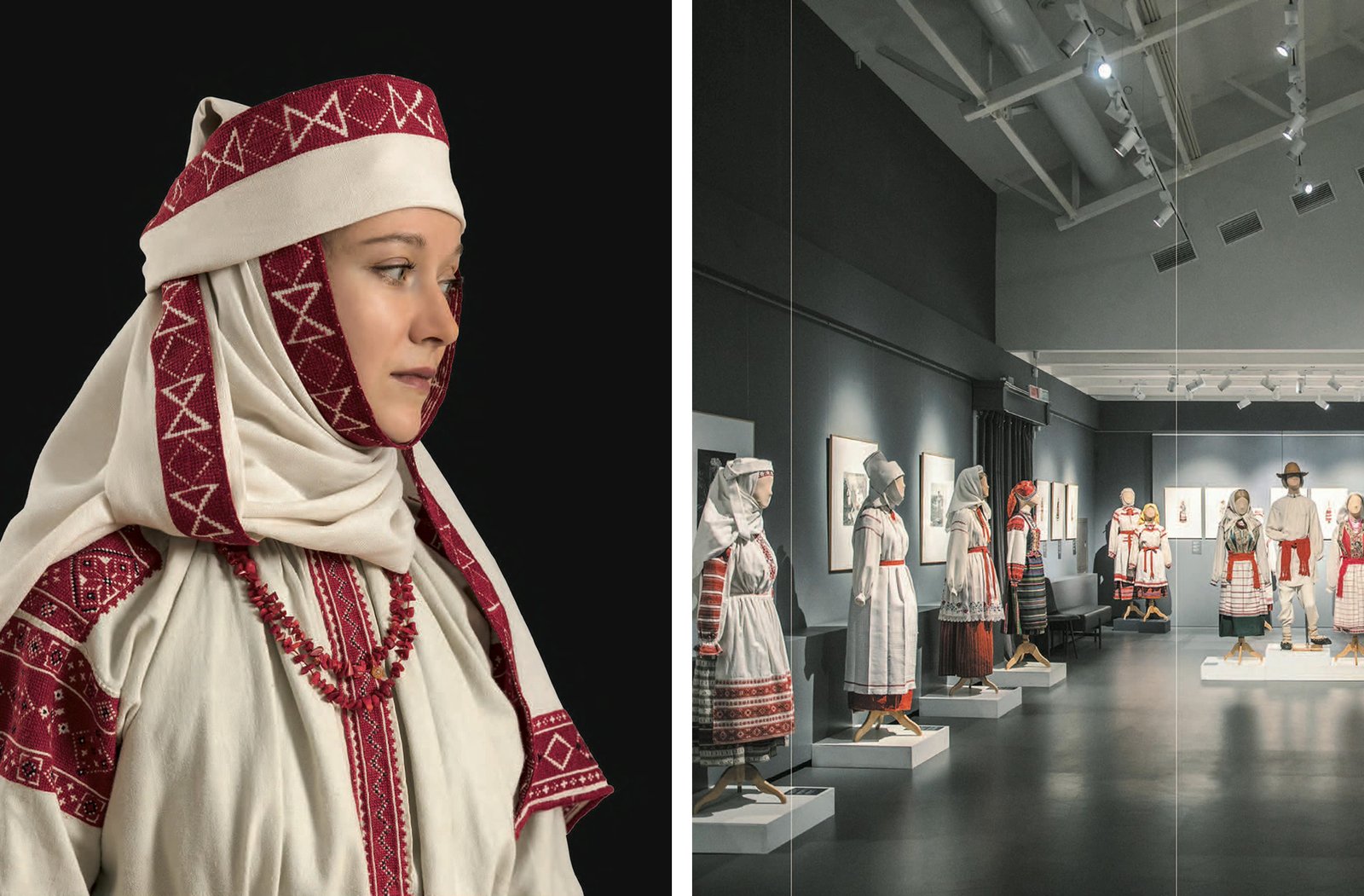
A collection “Šarašova and Pružany region: ethnographic, folklore, architectural and artistic heritage of the region – research and materials” is a book by the publishing house “Biełaruskaja navuka”. From the book summary: “The book is dedicated to the 645th anniversary of Šarašova, the homeland of outstanding ethnographic researchers Pavieł Babroŭski and Juzef Ihnat Krašeŭski. In Šarašova, traditional buildings and architectural monuments have been well preserved, which are today the objects of study of researchers of various fields. All this determines the attention of historians, ethnologists, folklorists and art historians to this place”.
The book “Belarusian Lullabies”, published by the “Ethno Tradition” project. From the book summary: “The book collects lullabies from all ethnic Belarusian regions, including Podlasie and Polesia. In addition to notes and text, each song has an audio version that can be listened to by scanning the QR code”.
The book “And they sang so long ago. Musical folklore of the Old Believers of Northwestern Belarus” [“І даўней так пелі. Музычны фальклор старавераў паўночна-заходняй Беларусі”]. From the book summary: “The book was published as a memory of the village Old Believer singers of the Western Podwinie, who carried their rich cultural heritage through the centuries. As a memory of those ancient songs that disappear without a trace along with the departure of older people to a better world”.
The programme of the course “Belarus Studies” [“Беларусазнаўства”] developed by the Institute of the Belarusian Language. A large part of the programme is devoted to topics dedicated to traditional culture. From the book summary: “The programme aims to expand knowledge about Belarus and Belarusians. It is addressed to a wide audience: Belarusians living in Belarus and abroad, as well as everyone interested in expanding their knowledge about the cultural and historical heritage of Belarus, its geopolitical position and aspects of modern development. The programme is not tied to a specific educational institution, it is designed as a “flexible basis”, which, taking into account a specific target group, can be supplemented and adapted to the needs of a concrete speciality and age of students”.
Art: Heads without Bodies and a Capitoline Wolf in a Wheelchair
Our reflections on contemporary processes in the visual arts are mostly just the subjective work of an observer from a distance, through the lens of a monitor, which does not allow us to directly feel the influence of space and material, adding a glassy sheen and reflections. For the most part, our knowledge is limited to statements in public space and media representation abroad, taking into account censorship on a country-wide scale and the fear of an entire generation.
A chain of thoughts reflected in a photo
Photography remains not only a mediator, but also the most sought-after medium even among artists. The objectification of optics gives the photograph the power of the fact of captured time, even if it is a surreal image or a fragment of a collage. A large part of this year’s Belarusian fine art is represented at many festivals and major exhibitions precisely through photography.
Saša Vialička won the Grand Prix at the Les Boutographies 2025 festival in Montpellier, France, for her project State of Denial. It is a multi-level conceptual structure in which photography and texts, taken to the point of absurdity, expose the mechanisms of propaganda and testify to political repression in Belarus. The artist reinterprets the trauma and cynicism of violence through staged images created as a critical and ironic response to the informational noise of propaganda media.
Kaciaryna Kuźmičova is a participant in several exhibitions and festivals in Wrocław, Poznań, Belgrade and Sarajevo with her Betonium project, which has been in the making for many years and spans 11 countries. Here she explores the connection between contemporary collective identity and the architectural heritage of Central and Eastern Europe, where elements of late modernism intertwine with its brutalist pragmatism, directly influencing human behaviour.
We see a completely different approach to photography in the work of Aryna Jesipovič, who took part in exhibitions in Bordeaux, France (34th Itinéraires des photographes voyageurs) and Plonéour-Lanvern (Exposition Ouverture Avant Les Travaux). The artist transforms her experience of emigration and movement into a dynamic performance and interactive sculptural installation, which is part of the architectural space. The transition from the photographic plane to the volumetric geometric cubature plasticity contrasts with the motifs of the landscape and the body. And, I think, the author specifically uses ambiguity as a territory between unity and multiplicity, where the work as a process is built into a whole and breaks up into fragments to emphasize not only her true psychological state, but also that of each of us.
Aleks Kuźniec allegedly continues the dialogue of the dependence between geometry and psychology and for his exhibition in Eberswalde, Germany, chooses a building erected by the legendary Martin Gropius, which is now used as a psychiatric clinic. Approaching architecture so closely, one inevitably enters the field of abstraction, where primary forms require the same decoding as emotions or agreement with the ineffable.
At another French photo festival, Les Mesnographies, Alaksandr Kot-Zajcaŭ presents his interpretation of the border line through accents of feelings, emotional and psychological states, well understood by every Belarusian after 2020. The consciously chosen contrast of black and white photos, enlarged to human size and placed on cubes in the greenery of a summer park, creates a tragic feeling of irresistible isolation.
In the project “Delicate Shift” (Delikatne przesunięcie) by Alaksandr Vieladzimovič, which was presented in Gdańsk, there is the same analogue black-and-white photography, the same realistic approach, a psychological portrait. However, it’s a completely different view – a structured, multi-level depth, close to a hermetic picture of generalization. In each frame – a human gaze peering from the mirror of reality of a parallel world of ideal and idyll, and the author – only a “delicate shift” and a print of the miracle of the moment.
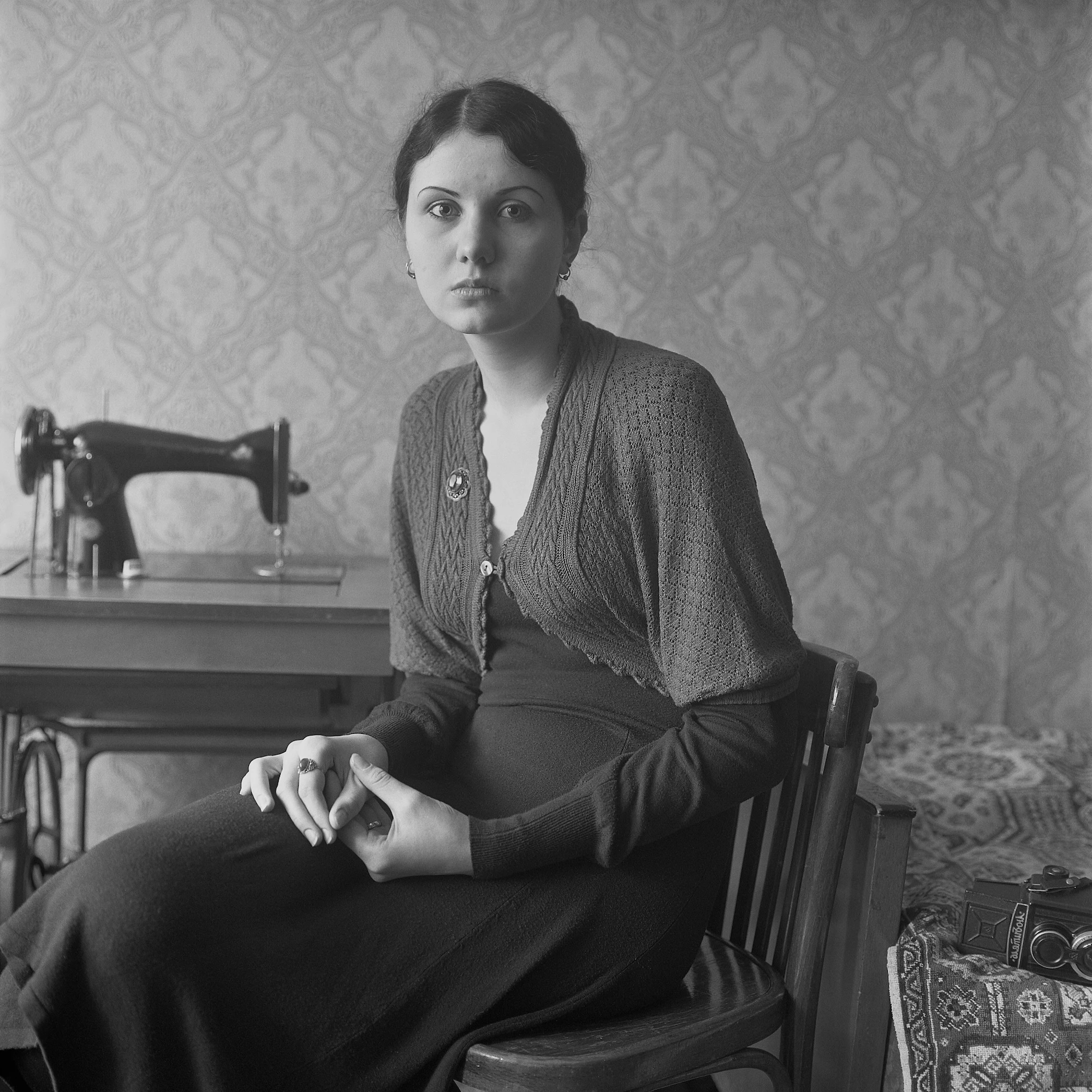
Moving around the Belarusian map of Poland, we look into other holes of the black box. In the installation by Siarhiej Šabochin “Fear of Castration: The Dark Room”, presented at the Poznań exhibition “LGBT Zones + | Queer Art in Times of Good Change” (Strefy LGBT+ | sztuka queerowa w czasach dobrej zmiany), photography becomes a guide to another social space — “darkrooms”, dark rooms of gay clubs and bars in Warsaw. The slogan “White culture is afraid to look into the black hole” reminds us of the fears of official systems before encountering marginal subcultures.
Other dark pages of history refer us to Volha Bubič’s project “Landscapes of Memory” in Stockholm, which commemorates those who survived World War II, especially the victims of concentration camps. This project combines the author’s experience as a researcher, writer, and visual artist, seeking to reveal the silent, the unspoken, and the hidden — both in the events of the past and within herself.
World War II resounds again and again in the work of Belarusian artists as evidence that it is not over yet. Maryja Hvardziejcava’s project “Bitter Herbs” [«Горкія зёлкі»], presented in Vilnius, explores how the memory of the Holocaust is preserved in the landscapes of Belarus and the Baltics, where the genocide of the Jewish population left a deep mark. For the installation, the artist uses plants from mass graves, and photographs become the backdrop for herbarium collages. The collision of documentary and natural artifacts seems to compress time, embodying the memory of the body through nature.
The theme of memory and ruins does not let go of current art – as a continuation of a culture repressed in time, which from generation to generation is forced to restore the destroyed. Part of the new project of the VEHA archive “Ruins of Belarus” was presented in Poznań at the exhibition “On the Borders” [«На памежжах»]. This is a huge collection of private photographs, which testifies to a rich heritage and at the same time to enormous losses – supposedly warning about the dangers of modernity. Such a project may not quite fit into the framework of contemporary art and in terms of genre it is closer to historical or ethnographic work, but it well reflects the characteristic features of today’s Belarusian artistic process, in which folklore and national symbolism play an important role.
As confirmation of this thought, I would like to recall the very beautiful project by Lesia Pčołka “Roadside Objects”, shown at the 15th European Young Photography Festival in Paris. It was inspired by the book “Belarusian Folk Crosses” by ethnographer Michaś Ramaniuk. The author followed the route of his map, but none of the crosses at the roads and intersections mentioned in the publication were found by her. New forms appeared in their place. And this anonymous traditionalism of free repetition has something in common with the modern conceptual practice of topography and citation. The photos of the crosses, translucent and almost life-size, placed in the gallery space, are read in both directions, as if creating a metaphor for movement through space and time.
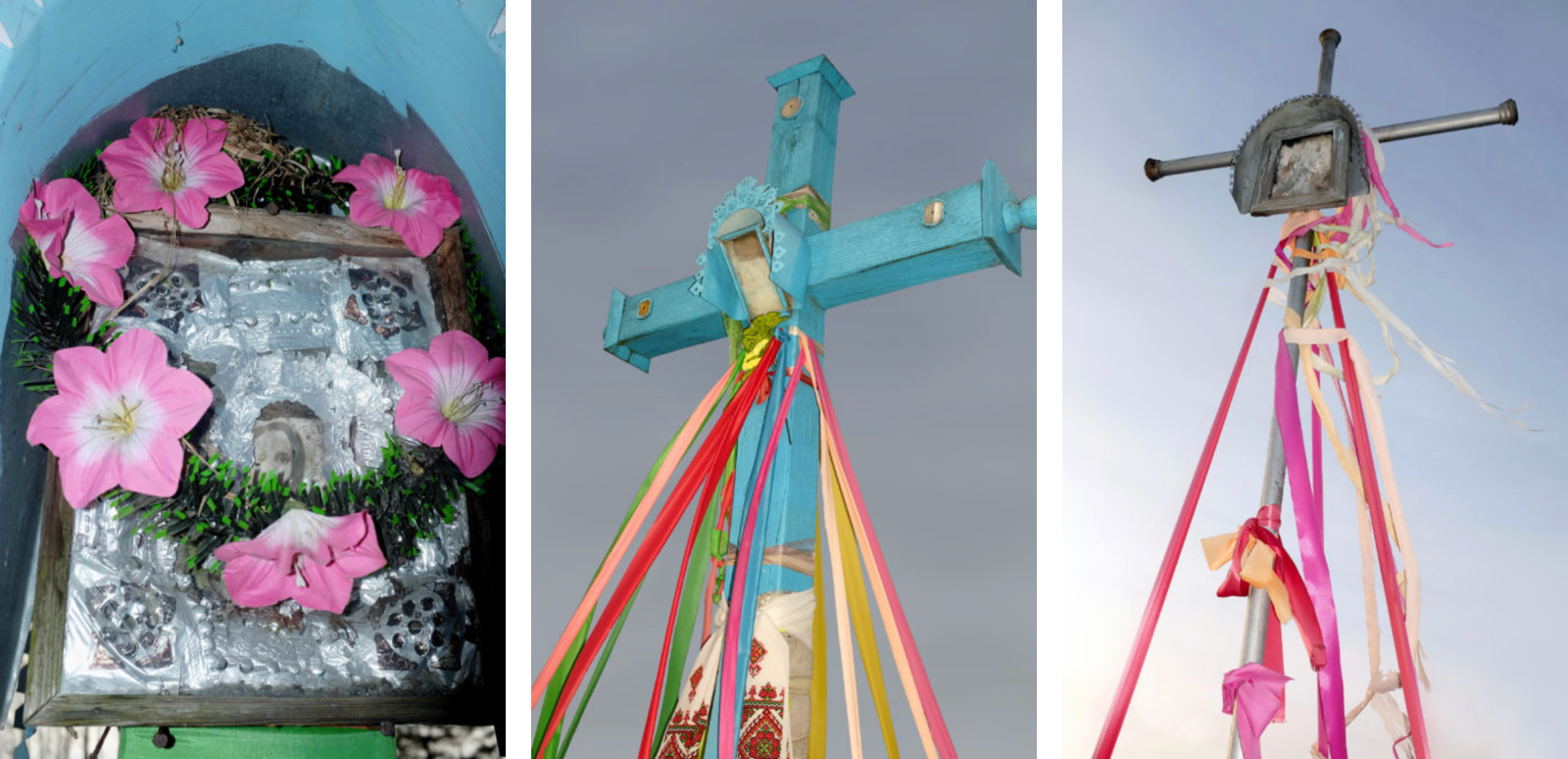
The lack of freedom and the possibility of critical expression can lead even such photo artists as Andrej Lankievič to a paradoxical rejection of artistic practices. But the fascination with tradition and the desire to preserve the national heritage – even through folklore – have repeatedly fuelled progressive movements in history, not only aesthetic, but also national liberation. Perhaps I am thinking as a figure of the 19th century – but maybe such a large-scale scan of grassroots culture (presented in Andrej’s project “Belarusian Traditional Interior”) even more reflects the modernity, which is still working on the issues of the Napoleonic era.
I tried to use one medium as an example to link the creative expressions of Belarusian artists into a chain, regardless of personal and geographical disunity, the existence of a hard border, and the brokenness of direct communication. That is why the conceptual statement about communication with Belarus in the project “Breaking the Silence” [«Парушаючы цішыню»] of the Minsk National Centre for Contemporary Art is so important. It shows that art as a tool and language of communication is an incredibly strong mediator and medium. This is the case when “pictures” speak louder than words.
The habit of observation has given a number of Belarusian photographers the qualities of curators. Dzina Daniłovič, Siarhiej Michalenka, Ludmiła Pahodzina and Daniła Parniuk continue to create important and vivid exhibition projects.
“…somewhere in the forest, Belarus”
Speaking of processes within Belarus, I was very interested in the project “galleries without a place”, created by Julij Iljuščanka together with Illa Padałka and Alaksandr Fidłoŭski, which was implemented in the form of a book “Contemporary Art Magazine / Minsk 2025”. On the one hand, we have a fairly traditional format for the underground, on the other, it is fresh for today’s tired and depressive atmosphere. This is a rather successful attempt to find an appropriate form for research and a critical look at the situation, and in addition, the book revealed completely different names, far from the mainstream.
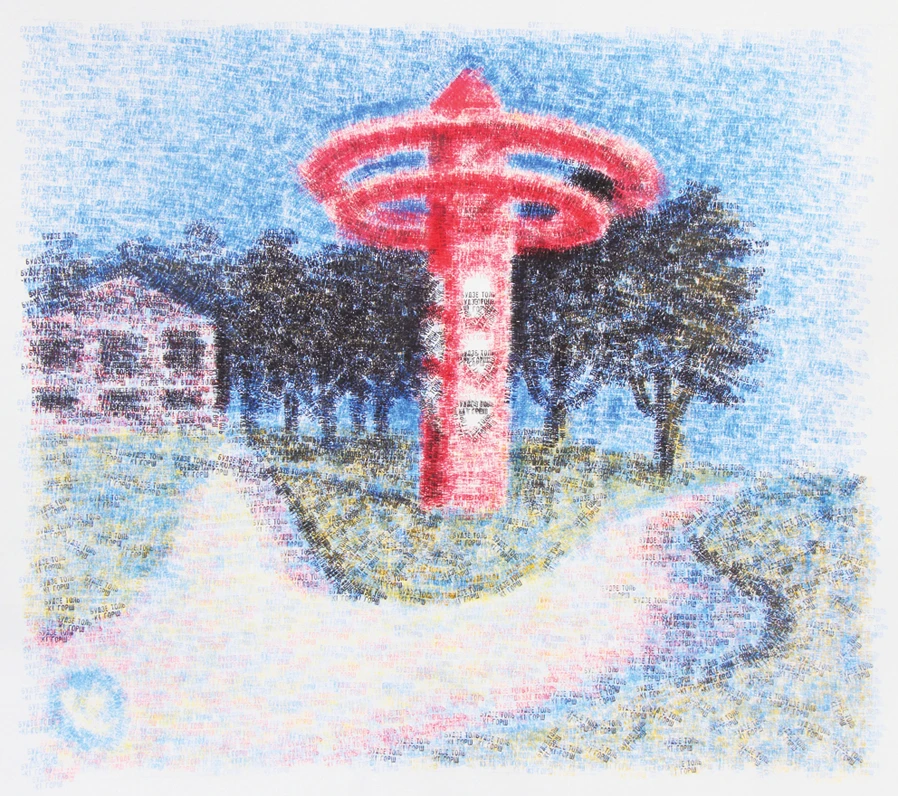
An equally interesting form of resistance to censorship and the search for new territories can be the example of the exhibition/art picnic “Forest + Abandoned Pillbox” with the eloquent accuracy of the coordinates: somewhere in the forest, Belarus. Here, the tradition of partisanship resonates with the desire for nature, and a positive attitude is demonstrated in spite of everything.
The theme of nature still remains important for Belarusian art, it is not only political and psychological “escapes to the forest”, but much more important is the understanding of the biofactor as the integrity of the global world and self-preservation in the works of BZT. Hieorh Jahunoŭ’s appeal to prehistoric materials and their combination with laboratory plant elements supposedly returns us to the level of mosses and mycelium, but at the same time compresses time and gives us an understanding of the long history of the planet. Jura Šust explores the intersection of ritual and mythology with modern biopolitics through ecological and ethno-religious projects, where new technologies paradoxically introduce us to the world of neo-paganism. And the physics and techno of augmented reality in the projects of Aleh Juško turns into a magical and at the same time ironic game, where the true contents remain a mystery. Cold technologicality and minimalism of form reach an almost political significance in Hanna Sakałova’s monumental video installation – the waves and sound of the sea throw us back to the elements. Art constantly strives to walk parallel to nature, and it is on this border that the long-standing struggle of human intelligence takes place.
And indeed, the question of the borderland remains: how does division occur? Where does the real intellectual struggle unfold? What is “new political thinking”? What forms correspond to our time? And is it possible to build truly new things without the foundations of history?
One can only list the names of a number of exhibitions to understand how the theme of the “border” does not let go of Belarusian artists.
“Point of Departure” [«Кропка сыходу»] by Volha Archipava and Evielina Maraškievič is a curatorial project that presents the work of Belarusian artists who continue their work in exile.
“On the Borderlands” [«На памежжах»] – curator Liza Sciacko works with the notion of “between” and the concept of border territories filled with tension and pressure. This is where Belarusian identity is formed.
The exhibition “There is no river without sources” [«Няма ракі без вытока»] by Alena Rabkina is about Belarusian identity. The project summarizes the five-month research work of 11 Belarusian artists from 8 countries and refers to the idea of collective memory and cultural heritage, emphasizing the importance of origins and common ties.
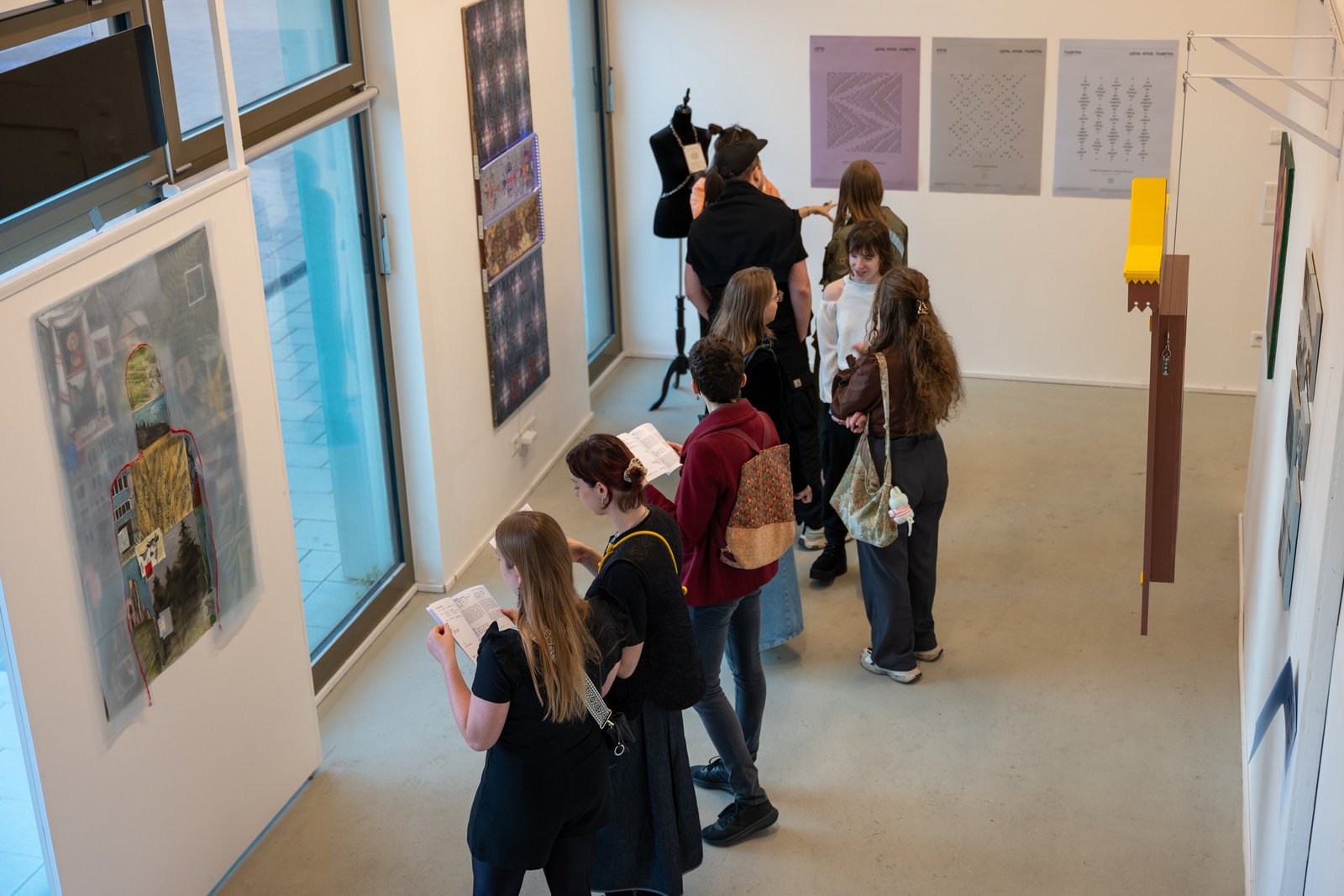
Even the exhibition, developed by Belarusian curator Lena Prenc and Ukrainian Taćciana Kačubinskaja, dedicated to the 60th anniversary of one of the largest collections of Polish and Eastern European art at the Arsenal Gallery in Białystok, is in a sense about the borderland of three countries and how art transcends political and architectural boundaries, uniting human and urban space.
A completely different mood is found in Razalina Busieł’s installation, presented at the Berlin Keramikünstlerhaus, “Borders and Restrictions. One More Brick” — a poetic reflection on loss, transition and migration, where ceramic forms on the border between coffin and brick turn into a metaphor for the destruction of an old life and the difficult birth of a new one beyond borders.
Back to the origins
On this side of the border, memory clings to the traditional. Folklorism is deeply rooted and has become a frequent element in the works of Belarusian artists. Perhaps one of the simplest strategies to think about the national is through ornament and symbol, but it is quite risky for contemporary art, as it balances on the border between decoration and handicraft. Volha Savič’s project at the 14th Biennial of Graphic Art in Poznań is based on a combination of traditional patterns and photographs of people, whom she transforms and depersonalizes, as if searching for a corresponding sign of today’s Belarusian.
At the Berlin exhibition “Playing with Fire”, Rufina Bazłova, who has long since developed her own “Survivor” [«Выжыванкі»] style, on the verge of embroidery and political comics, presented her “Guernica” – a huge work in which she replaces traditional sewing with printing with a stamp and a cross, an element that further strengthens the theme of the tragedy – the theatre in Mariupol destroyed by Russian troops, along with the children who were hiding there from the bombings.
As if continuing this dialogue about simultaneous protection and danger, Ała Savaševič creates objects in the shape of knightly shields using the traditional method of straw inlay, decorating them with camouflage patterns and flowers.
For his sculptures, which are part of the Berlin exhibition “What Do We Take With Us? Invisible Work”, Raman Traciuk uses old axes, hammers, and picks, rhythmically multiplying common tools. And Kaciaryna Kuźniacova and Alaksandr Edzišeraŭ return to the space of the church, where they create a light installation in the shape of a cross from vegetable boxes.
In the project “Memories at the Bottom of the Heart” [«Успаміны на дне сэрца»] Anastasija Burko-Dziemidziuk uses carpets, curtains, and towels – things that could deceive a visitor to a contemporary art festival if it weren’t for the installation form of presentation and going beyond the boundaries of a regular gallery space.
Even a conceptual artist like Maryna Napruškina at the “Art Encounters Biennial 2025: Bounding Histories. Whispering Tales” in Timisoara, Romania, turns to the form of a carpet using ornaments and quoting Belarusian folk songs. And this approach testifies not only to the memory of the mother tongue and the image of the homeland, but to an even greater extent – to the modern feminist movement, which clearly emphasizes and uses traditional female forms and technologies of artistic expression.
The children of the asphalt lose touch with the soil, not noticing how, step by step, the folklore is being replaced by the popular and the mass. Exploring modern urban folklore is much more difficult than turning to kitsch. In Alina and Jeff Bliumis’s long-term project “Picture for a Family Dinner”, widely presented at the Dortmund U, the aesthetics of the masses is transformed into banal pseudo-democracy. It teeters even more on the verge of vulgarity in Alina’s project Gut Feelings.
Process may seem more important than the result. Quality is determined by enthusiasm and energy – as in the case of «Saša i Siroža» by Alaksiej Chackievič. However, behind the form of cynical mockery, social and political criticism almost always hides.
In today’s socio-political circumstances, we turn to “rescue” technologies and media, but scanning and 3D printing only repeat the ancient Capitoline Wolf, to which Alaksandr Adamaŭ adds a wheelchair. In times of alogism and irrationality, we feel as if we are cripples who return to our origins. Sculptures of armless babies placed in industrially produced baby carriers create a disturbing combination of the familiar and the alien, the use of antique standards and the multiplication of viruses of the ready-made.
Lost to public culture, logic and law resemble a severed head – a sculpture by Ała Savaševič, presented at the exhibition “Hospitalities” at the NOMUS Museum in Gdańsk. The goal of the project is to reflect on the most important categories that shape modern Europe.
We see the same motif of a head without a body in the premiere of Arciemij Kopač at the Warsaw Ujazdów Castle. It seems that the topic is about something else – self-identification, self-portrait and resistance to the material, but in art, trends are created from similarities.
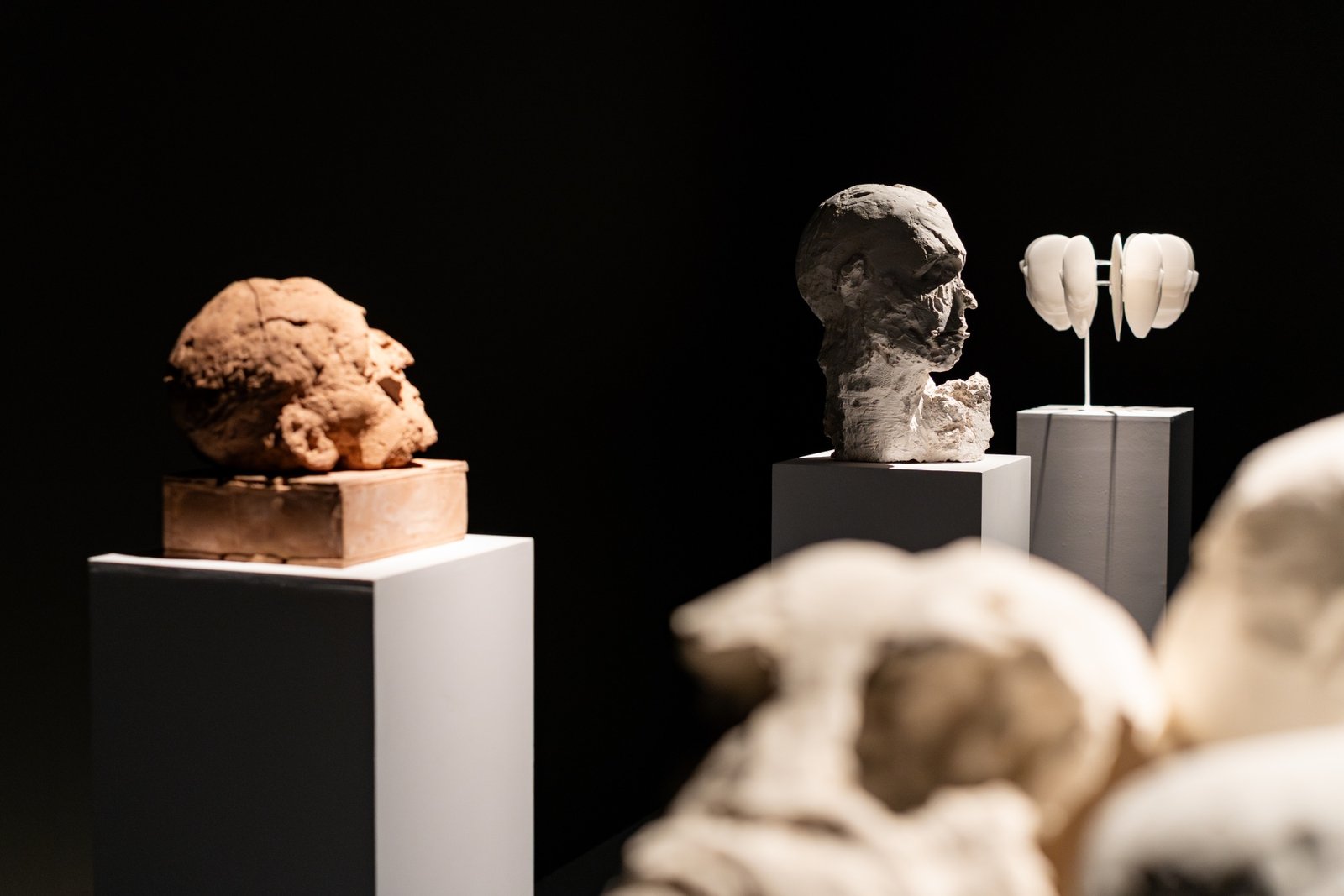
The image of a person disappearing into the vaguely shaped space of an expressive gesture has become characteristic of Natalla Załoznaja, Jaŭhien Šadko and Taćciana Kandracienka, Paul Wesenberg and a whole range of young Belarusian painters, abundantly represented in galleries and at art fairs. The body that has turned into abstract “Bruises” by Alina Bliumis reminds us of the pain and violence of the still not overcome year 2020.
“Nothing particularly new” is the watchword of Belarusian political prisoners, and these same words can be used to describe the state of independent culture that has existed for centuries under conditions of repression. The exhibition at the Museum of Free Belarus gives symbolic meaning to simple things, facts of private dramatic destinies, and exposes the aesthetics of documentary realism.
We understand the basic philosophy of fine art, where there is a form that testifies to itself. And in times like ours, the rejection of words and texts becomes a conceptual position for artists, as is the case with Volha Masłoŭskaja in the project “Postcards from the Motherland. Flora and Fauna”, where animal silence is a form of resistance and survival.
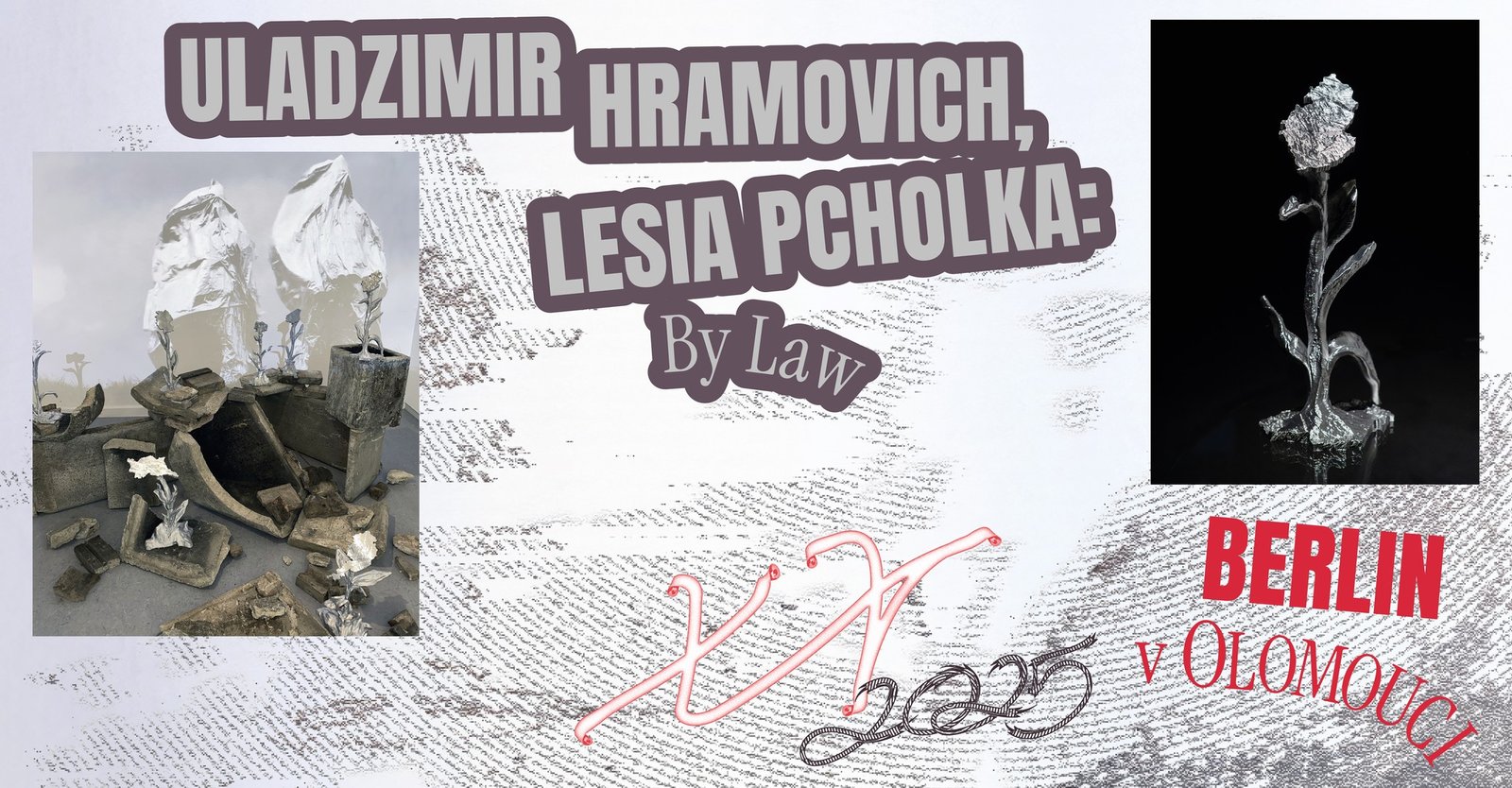
It is important that the voice of Belarusians does not cease to be in solidarity with Ukraine. And this is one of the functions that true culture assumes. This is exactly what happens at the large EU UA exhibition in Düsseldorf, which is attended by more than 200 people, and the organization of which was also joined by Belarusian curators and artists.
Sometimes a symbolic gesture gives even more hope than practical help. Love in the Ruins of Lesia Pčołka and Uładzimir Hramovič is not only a reminder of the dramatic picture of this time – it outlines the contours of the heroes of our time.
The reviews are prepared with the support of the ArtPower Belarus programme and the European Union.



